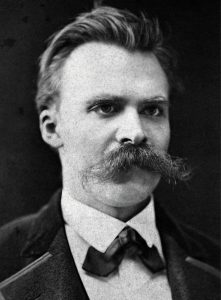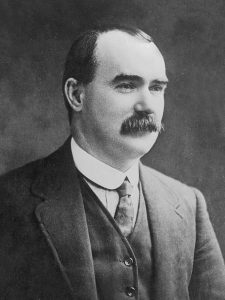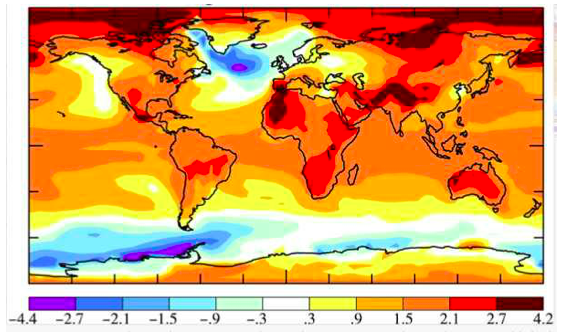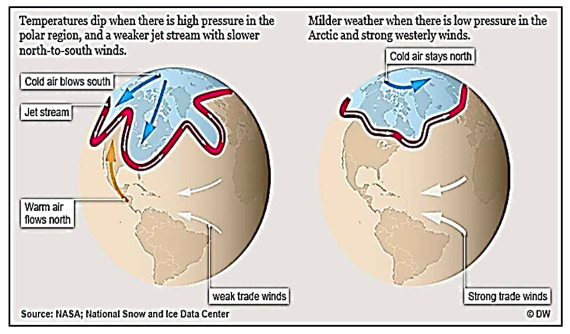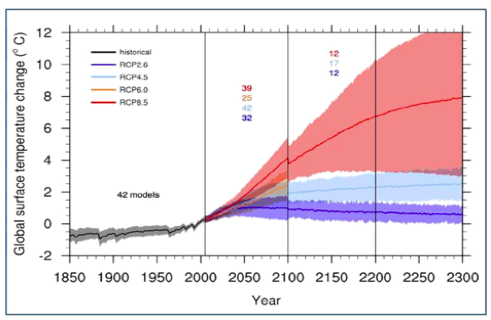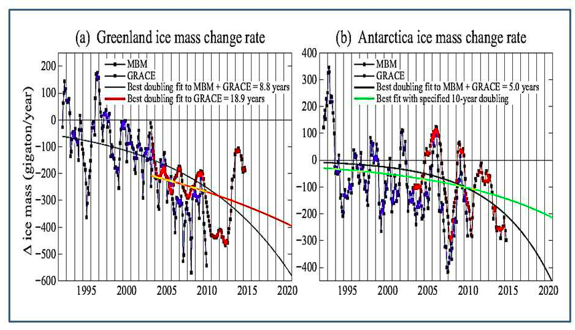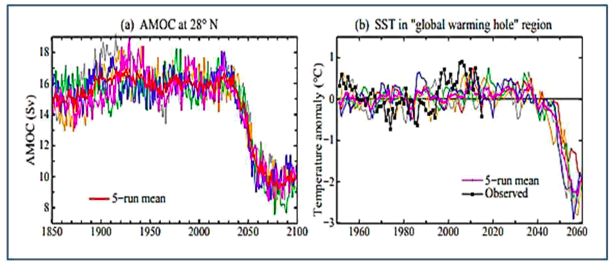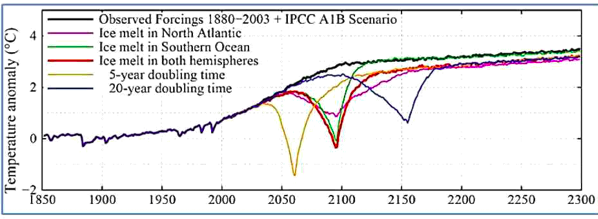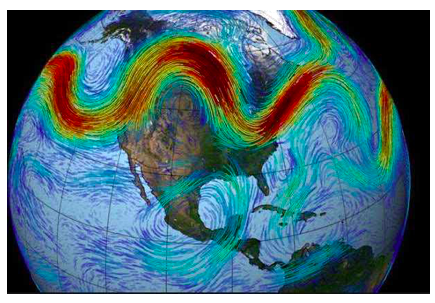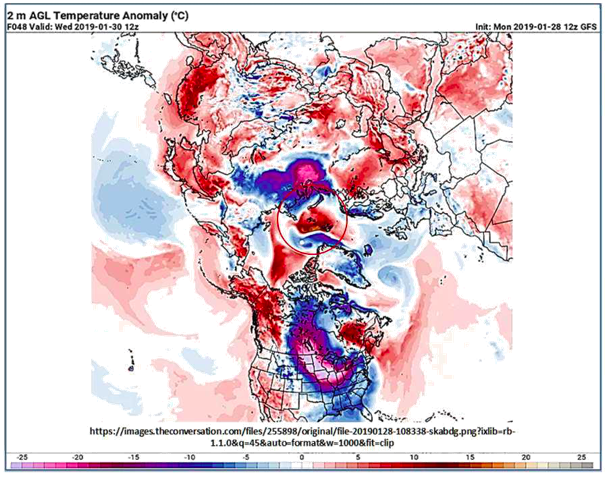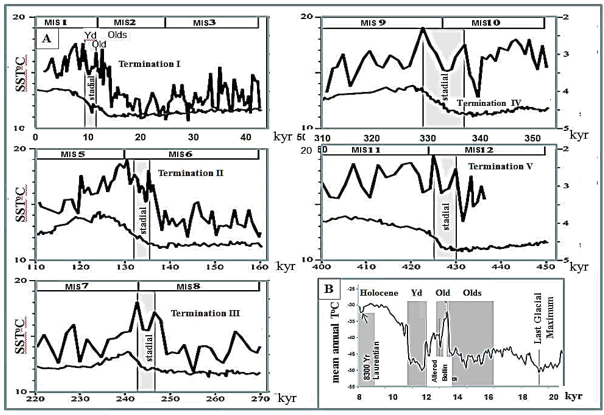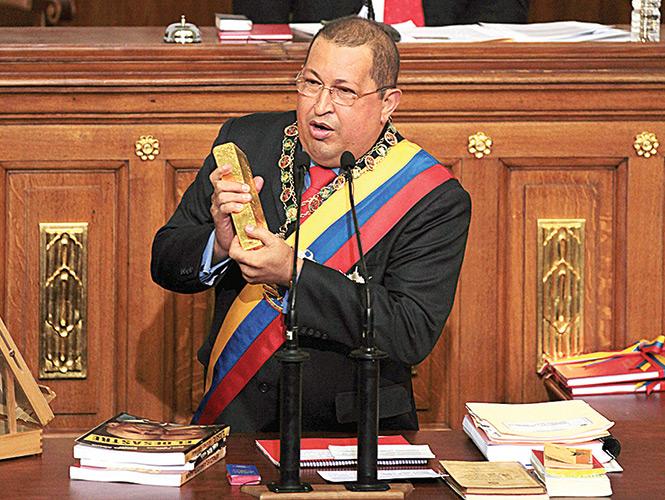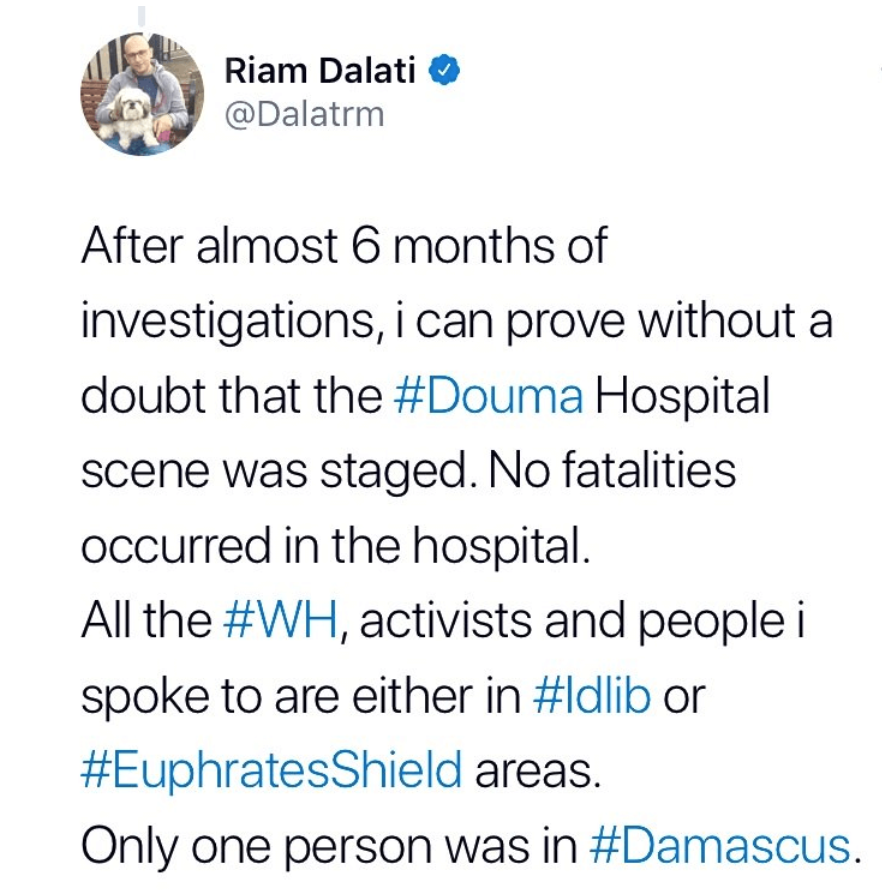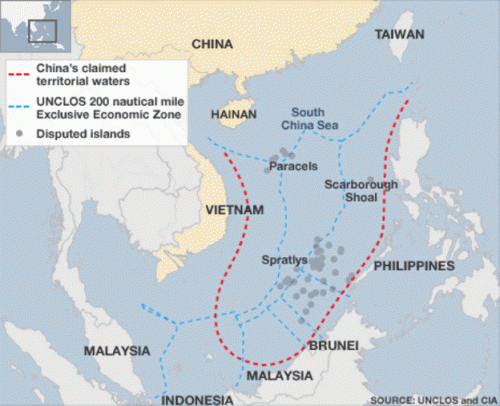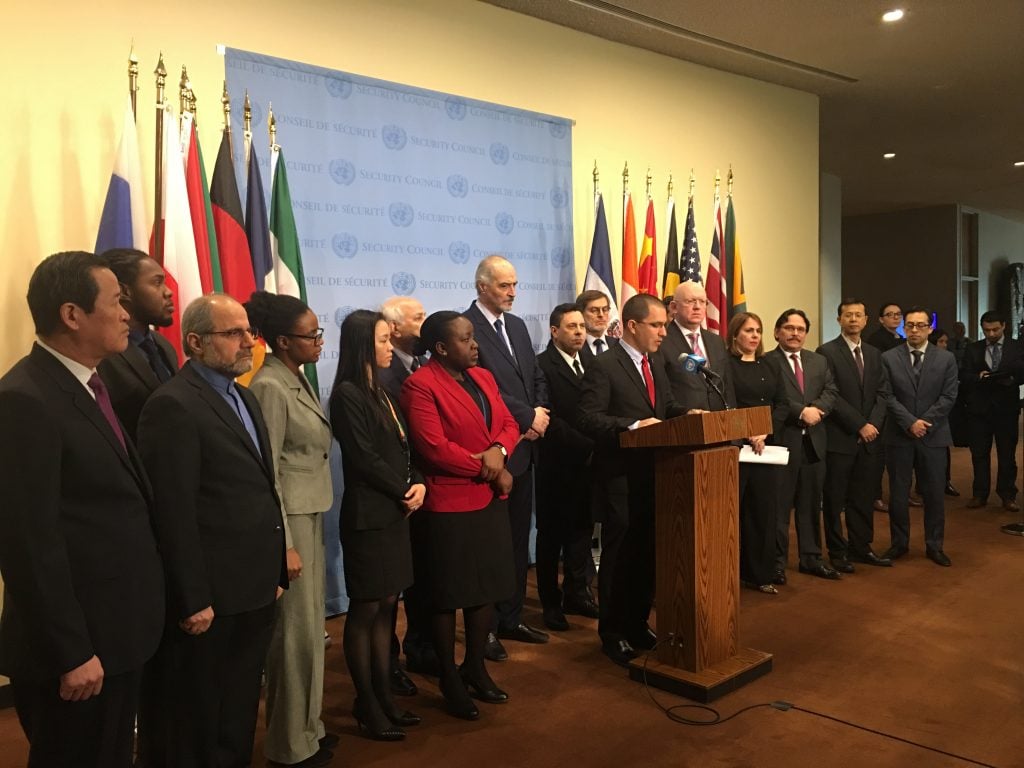“A History of the Global Economy. The Inevitable Accident” by Colin White describes the history of the global economy through its successive stages of foraging, the Agrarian Revolution, the Industrial Revolution and the presently expanding Service Revolution economy. Ambitious and full of ideas, it will provoke lots of discussion, and in that sense this scholarly work should be in every library. Indeed significant arguments will arise from the perspectives of science and the Developing World e.g. it controversially suggests a rapid, epigenetics-based, neo-Lamarckian evolution of human intelligence in recent centuries, and minimizes the horrendous, de-industrializing and deadly impact of genocidal British colonialism that robbed India of $45 trillion and caused 1,800 million premature Indian deaths over 2 centuries.
Colin White’s “A History of the Global Economy”( 512 pages, 24 chapters, Edward Elgar Publishing, UK, 2018, $169 on Amazon) [1] draws on research in various areas to describe economic progression and its basis from pre-agrarian hunter-gatherer (forager) societies, through the Agrarian Revolution and the Industrial Revolution to the present-day shift to a heavily Services-based economy as in the UK. Colin White is a Cambridge-educated economic historian and was formerly a professor of economics at La Trobe University, Melbourne, Australia (disclaimer: I taught Biochemistry there over 4 decades and Colin has indeed been a friend of mine since the 1970s). The book is in 7 sections and concludes with a useful and humane consideration of where we are at and where we are going. The following careful and sequential review of the book’s chapters reflects my perspective as a biological scientist and a humanitarian.
My review is very detailed and involves numerous critiques but this indeed is testament to the great merit of Colin White’s provocative book, specifically that it will provoke lots of useful debate.
Part I. Introduction, comprises Chapters 1 and 2. Colin White justifies his book thus: the “Persistent poverty, increasing environmental damage, coexistence in a multi-polar world with new global leaders, changes in demographic behaviour, the prospect of strongly labour-saving technical change – these are a few of the challenges which combine, each requiring a solution. History helps us to find such solutions…One good reason for attempting such a global economic history is the old cliché: those who neglect history are bound to repeat the mistakes of the past”. He concludes his Introduction in praise of progress: “The claims of improvement are most relevant to developed societies, which goes to the heart of the argument that people are more likely to be better off the further along the pathway of economic development their society has moved, which partly explains the desire for such movement on the part of the vast majority of humankind”.
Critique. We all want to remain alive and have a nice life. However there is a price for progress. Colin White observes towards the end of the book that Humanity is now existentially threatened by poverty and climate change – to which scientists would add nuclear weapons. Poverty and deprivation kill 15 million people each year [2] but unaddressed climate change may kill 10 billion people this century [3-5] and nuclear weapons may wipe out most of Humanity and the Biosphere [5]. Thus renowned physicist Stephen Hawking (2018) : “We see great peril if governments and societies do not take action now to render nuclear weapons obsolete and to prevent further climate change” [6].
Chapter 1, “Finding a common economic pathway”, comprises sub-sections “Interpreting the global historical experience”, “The changing structure of an economy”, and “Periodising the narrative”, and justifies this quest thus: “In writing a global history it is necessary to identify the patterns characterising that history. Without such an identification the history remains banal, repetitive and without a means of understanding the direction it has taken”. Importantly this chapter recognizes a fundamental problem of economic growth, specifically demand and supply limits to growth: “There is a limit to the growth of consumption of the different consumer goods, agricultural or industrial” (demand) and “Some resources are renewable: trees can be replanted or animals bred, but even in modern agriculture there is a net consumption of natural capital, as the fertility of the soil is used up” (supply). Nevertheless the chapter concludes with the optimistic assertion: “There is an underlying forward economic movement which simply reflects the creative innovativeness of Homo sapiens”.
Critique. But an economic pathway to where? Limits to growth is a fundamental problem from foragers to the present. However the resources of the Earth are finite as recognized by the 1972 “The Limits to Growth” report to the Club of Rome [7, 8] (not quoted in this book) that commences: “The problems [UN Secretary General] U Thant mentions – the arms race, environmental deterioration, the population explosion, and economic stagnation – are often cited as the central, long-term problems of modern man. Many people believe that the future course of human society, perhaps even the survival of human society, depends on the speed and effectiveness with which the world responds to these issues. And yet only a small fraction of the world’s population is actively concerned with understanding these problems or seeking their solutions” [7]. “The Limits to Growth” was variously criticized and ignored to the present point at which Humanity is acutely and existentially threatened by nuclear weapons, poverty and climate change [5]. One of the authors, Jørgen Randers, writing 40 years later, commented thus on the climate emergency: “I am a climate pessimist. I believe (regrettably) that humanity will not meet the climate challenge with sufficient strength to save our grandchildren from living in a climate-damaged world. Humanity (regrettably) will not make what sacrifice is necessary today in order to ensure a better life for our ancestors forty years hence. … Otherwise, I predict, it will be the Chinese who solve the global climate challenge – singlehandedly. Through a sequence of 5-year plans established with a clear long term vision, and executed without asking regular support from the Chinese. They are already well on the way, for the benefit of our grandchildren” [9- 12].
Professor Dabo Guan (School of International Development, University of East Anglia, UK) has succinctly summarized our present predicament thus (2016): “For everyone in the world to have an American lifestyle, we would need seven planets, and three to live as Europeans” [13]. Jeffrey Sachs (American economist and former director of the Earth Institute at Columbia University) (2011): “India’s great moral leader Mohandas Gandhi famously said that there is enough on Earth for everybody’s need, but not enough for everybody’s greed. Today, Gandhi’s insight is being put to the test as never before. The world is hitting global limits in its use of resources. We are feeling the shocks each day in catastrophic floods, droughts, and storms—and in the resulting surge in prices in the marketplace. Our fate now depends on whether we cooperate or fall victim to self-defeating greed” [14].
It can be estimated that there must be negative carbon pollution (atmospheric CO2 draw-down back to about 300 ppm CO2 from the present damaging and dangerous 410 ppm CO2), negative population growth (population decline by about 50%) and negative economic growth (degrowth in the North with limited growth in the impoverished South ) to halt and reverse the present worsening climate change , land and water disaster [15]. The egregious wealth inequality – the top 1% owning half the wealth of the world and the Global Avoidable Mortality Holocaust in which 15 million people die from deprivation each year – must be urgently addressed e.g. by an annual wealth tax as suggested by Thomas Piketty [16, 17].
Chapter 2 is entitled “Transitions and revolutions”, this being a common theme throughout this history that commences with the evolution of Man and thence describes foragers, the Agrarian Revolution, the Industrial Revolution and the present Service Revolution in Developed countries.
Part II. “Beginnings: place and people” comprises Chapters 3-5, and considers the evolution of man. Homo sapiens arose about 200,000 – 350,000 years ago in Africa, with major considerations being a bigger brain, design of tools, language, and use of fire. The molecular basis of Darwinian natural selection of favourable genes is abundantly documented by (Mendelian) genetics. Further, behavioural changes can be selected for both at the DNA level (through genes) and through social selection of ideas (memes) [16]. Epigenetic changes (e.g. DNA methylation, histone protein covalent modification, and binding of non-coding RNAs) can lead to changes in gene expression that can continue into some subsequent generations without changes to the DNA. There is mounting evidence that environmentally-induced epigenetic changes can lead to changes in gene expression, intergenerational adaptations and indeed to a more rapid human evolution [19- 23]. Alexander Osborne has recently reviewed “The basic mechanisms and functions of the epigenome… the role played by epigenetic changes in the rapid evolution of our species and emergence from our ancestor species, as well as the Human Accelerated Regions that played a role in this… how epigenetics has helped and hindered our species’ development via changes to the epigenome in more modern times, discussing case examples of documented instances where it is shown that epigenetics has played a role in the evolution of humanity” [20]. However Colin White speculates throughout the book that epigenetics can somehow speed up evolution of human intelligence and innovativeness and thus contribute to the speed of economic change, for example in Part II: “There is increasing evidence that Lamarck was right; that children and grandchildren can inherit the acquired characteristics of their parents, labelled transgenerational … Lamarck was sometimes right, but how far and how frequently is uncertain. (Even the cautious journal, New Scientist, estimated a one in five chance that Lamarck would be resurrected)”.
Critique. The adoption of Lamarckianism by Stalin-backed scientist Trofim Lysenko in the totalitarian Soviet Union was disastrous for Soviet wheat production and science [19, 24]. An epigeneticist puts the matter thus: “Today our molecular methods allow us to interrogate the epigenetic marks of the “germ plasm” (i.e. sperm and eggs in animals) and discover the extent by which the environment can indeed affect these marks. We know that environmental changes by toxicant exposure, stress, nutrition, and other factors can alter the epigenetic marks of many body tissues, including the gametes, and so an intergenerational epigenetic effect can be seen. It is important to note, however, that these changes are considered non-Mendelian [i.e. not involving heritable changes to genes] , but not Lamarckian [inheritance of acquired characteristics], and that we have a molecular basis for understanding genetic and epigenetic changes” [19]. Warren Burggren reviewed the literature (2016) and concluded: “Epigenetic inheritance likely contributes to evolution both directly and indirectly. While there is as yet incomplete evidence of direct permanent incorporation of a complex epigenetic phenotype into the genome, doubtlessly, the presence of epigenetic markers and the phenotypes they create (which may sort quite separately from the genotype within a population) will influence natural selection and, so, drive the collective genotype of a population” [22].
Michael Skinner has proposed a “Unified Evolution Theory” involving the following elements “Environmental epigenetic alterations promote genetic mutations to alter genotype variation” and “Environmental epigenetics and genetic mutation both promote phenotype variation on which natural selection acts” (noting that the genotype is the genome, the set of genes, and the phenotype is the developmental outcome of the expression of the genes) [23]. However Skinner notes expert “pushback” in this area and so Colin White’s suggestions throughout the book about epigenetic fast human evolution and economic “advance” remain very speculative. However Chapter 19 takes this argument to a very controversial stage with espousal of a rapid, epigenetics-based, neo-Lamarckian evolution of human intelligence and innovativeness in recent centuries.
Chapter 3, “Changing contexts” contains the sub-sections “The importance of place”, “Around the world”, and “The global distribution of people”, and is encapsulated by the following: “One achievement of early Homo sapiens was to settle every distinctive niche on earth, adjusting the nature of economic activity to suit the place… foraging persisted over a long period of time in a number of regions in pre-Columbian North America or in Australia”.
Critique. A disturbing passage (that is echoed later in Chapter 19 and elsewhere ) is as follows: “It has been argued that exposure to more challenging environments at higher latitudes stimulated a cognitive response favouring a higher intelligence quotient (IQ), allegedly explaining even current differences. There is likely to have been some such an influence, but a long-term continuity of differences in average intelligence level is unlikely”. A further related comment is “It is a paradox that the origins of Homo sapiens lie in Africa, the continent with the highest proportion of tropics. The slower development of complex societies within the tropics has been generally noted. Nearly all current developed economies are situated within the temperate area, as have been most past civilizations, unless high altitudes countered the negative tropical influence” – however this Eurocentric generalization is belied by the civilizations of Central and South America, West Africa, Egypt, Ethiopia, the Asian Fertile Crescent, the Indus, India, South East Asia, and South China.
Chapter 4, “The past within us”, encompasses the sub-sections “The hominid background, from 5-7 million years ago to around 30,000 BC”, “A competitor: the Neanderthals”, “The origins of Homo sapiens”, “Peopling the world: 100000 BC to AD 1000”, and “Implications of the settlement”, and describes the final evolution of modern man and his closest relatives such as the Neanderthals from the first bipedal hominids and the “out of Africa” progression. Chapter 4 continues with the epigenetic theme: “Environmental change has a powerful influence on which human genes are turned on and what off, the human genome being like a huge switchboard. The second element in the revolution is that, to some unknown degree, Lamarck (1809) was probably correct in arguing that acquired characteristics can be passed on from generation to generation”.
Critique. The key selection pressure and population “funnelling” through “bottle necks” imposed by successive Ice Ages and resulting in modern man is not emphasized. The crucial role of fire in human evolution is barely mentioned: “The demands of successful adaptation favoured those prepared and able to innovate. Homo sapiens needed to keep warm through the use of shelters and the exploitation of fire, and the making of clothing and tents”. A cogent, paleoclimatology-based argument is that the succession of numerous glacial-interglacial periods over the last 1 million years provided a huge and recurrent selection pressure and population “bottle-necks” for the final evolution and appearance of modern man about 200,000 years ago, with the utilization of fire being a crucial development. Paleoclimatologist Dr Andrew Glikson: “ Ice core evidence for the concentration of greenhouse gases and atmospheric temperatures during the last 740,000 years suggests highly unstable and often extreme climates during the ice ages (glacial) and during abrupt cooling phases (called “stadials”) during warmer (interglacial) periods, preventing the development of farming. A stable climate developed around 7,000 years ago. This allowed large-scale Neolithic production of extra food and thereby the emergence of villages, towns and later cities. This opened the way for Homo sapiens to expand its population and trigger energy output by huge amounts. Thus, despite their high intelligence, humans were largely restricted to hunting and gathering until they mastered fire and then until the climate stabilised enough to allow farming” [25]. Re recent human evolution, in the Christian era egregious persecution of Jews and mercantile associations and restrictions would have applied selection pressures for adaptive changes in intelligence but such speculation is complicated by Jewish origins. Thus Eastern European Ashkenazi Jews (a major part of my inheritance) derive from Khazar converts to Judaism in Southern Russia, and were heavily involved as merchants [26-28], but genetic analysis has revealed a substantial prehistoric European ancestry amongst Ashkenazi maternal lineages [29].
Chapter 5, “The dynamic forager”, comprises sub-sections entitled “What is foraging”, “Variety and change among foragers”, “A modern behaviour?”, “Characterising forager societies: a superior weed species”, and “Environmental impact of foragers”, and describes key attributes of forager societies. However there were some key omissions.
Critique. This chapter somewhat downplays the crucial importance of fire while stressing the social and nutritional importance of cooking. However missing from the analysis is the impact of increased brain size on mother and child through more difficult birthing and years of care for helpless infants. Also missing is the forager society “zero sum game” of ritual warfare (to minimize deaths while “owning” territory), and the elaborate skin-name systems of Australian Aboriginal foragers that , together with wife theft from adjoining tribes, minimized inbreeding in small groups. Division of labour and out-breeding (the patrilocal society described by Colin White) meant that forager groups had far greater gender equality than subsequent patriarchal agrarian societies. Dyble et al: “Even if all individuals in a community seek to live with as many kin as possible, within-camp relatedness is reduced if men and women have equal influence in selecting camp members” [30, 31] i.e. gender equality predicts greater genetic diversity. Indeed the emergence of patrilinear clans in the Agrarian Revolution lead to greatly decreased male genetic diversity [32] . In subsequent “civilized” patriarchal societies the head man controlled society through his family and kinsfolk. Thus in modern times consanguinity through first cousin marriage was common in Jane Austen’s 18th century English social class as well as in her novels [33], and first cousin marriage has a relatively high in incidence in the Muslim world [34].
Part III, “The agricultural phase from 15,000 BC to AD 1800”, encompasses Chapters 6-8 and deals with the Agrarian Revolution, animal husbandry- and cereal-based agriculture and the evolution from villages to towns, cities, empires and wars as populations and resource exploitation increased.
Critique. At this point one can concede in the relation to the burgeoning populations of the Agrarian and thence Industrial Revolution that “more is better” but nevertheless there were profound costs associated with these transitions. Indeed Colin White quotes Jared Diamond’s view that the Agrarian Revolution was “the worst mistake” in human history. Jared Diamond: “The worst mistake in the history of the human race… Skeletons from Greece and Turkey show that the average height of hunger-gatherers toward the end of the ice ages was a generous 5′ 9” for men, 5′ 5” for women. With the adoption of agriculture, height crashed, and by 3000 B. C. had reached a low of only 5′ 3” for men, 5′ for women. … Farming may have encouraged inequality between the sexes, as well. Freed from the need to transport their babies during a nomadic existence, and under pressure to produce more hands to till the fields, farming women tended to have more frequent pregnancies than their hunter-gatherer counterparts… with the advent of agriculture the elite became better off, but most people became worse off. Instead of swallowing the progressivist party line that we chose agriculture because it was good for us, we must ask how we got trapped by it despite its pitfalls. One answer boils down to the adage “Might makes right”… [Agrarian] bands outbred and then drove off or killed the bands that chose to remain hunter-gatherers, because a hundred malnourished farmers can still outfight one healthy hunter. Hunter-gatherers practiced the most successful and longest-lasting life style in human history. In contrast, we’re still struggling with the mess into which agriculture has tumbled us, and it’s unclear whether we can solve it” [35].
An even more profound loss has been associated with the Agrarian Revolution, the subsequent Industrial Revolution and the present Service Revolution. I have postulated Polya’s 3 laws of Economics (that are based on the 3 Laws of Thermodynamics that underpinned the Industrial Revolution), to whit, (1) (1) Price (p) minus COP (Cost of Production) equals Profit (P); (2) Deception about COP strives to a maximum; and (3) No work, Price (p) or Profit (P) on a dead planet [36]. The Profit (P), Cost of Production (COP) and price (p) associated with these transitions is quantitatively measured by economists in terms of GDP, accumulated wealth, human population and human achievements. However, suffering, illness, epidemic, and war Costs aside, this ignores some major qualitative Costs. Thus the Forager to Agrarian transition meant loss of an intimate connection with Nature, the Biosphere and cohabiting Humanity. The Agrarian to Industrial transition meant loss of intimacy with rural life and food production. The Industrial to a post-industrial Service-based society is meaning loss of personal manual creation and connection to the machinery enabling our rarefied and increasingly disconnected lives. And this progressive separation from critical reality and critical causality means we are now existentially threatened by nuclear weapons, poverty and climate change – no work, price or profit on a dead planet [5-12, 36].
Chapter 6, “Asking the wrong questions”, comprises subsections entitled “What is agriculture?”, “Proto-agriculture”, “Motivation?”, and “The sequence of events”, and poses some key questions, specifically “First, was the revolution abrupt in timing or did it have a gradual introduction? Second and probably more importantly, did it have genuinely revolutionary implications for the nature of economic activity and the way of life of most humans? Two further questions are more difficult to answer. Did agriculture improve the well-being of the majority of humans? If not, why did foragers engage in such activity?”
Critique. Missing from the analysis is that the importance of both bread and beer in ancient Mesopotamia has suggested that the nice taste of fermented cereals (beer) might have helped promote large-scale cereal agriculture [37]. The downsides of the Agrarian Revolution include poor health, animal-derived diseases, suppression of women, suppression of the underclass and slaves, authoritarian rule, wars, mass murder, genocide, human sacrifice, epidemics, and environmental destruction . Colin White notes the view of Professor Jared Diamond and asks “Why would humans deliberately choose something decidedly inferior?”, to which one replies why did millions of men go off to slaughter in WW1? Indeed why are we now existentially threatened by nuclear weapons, poverty and climate change? [5] A crucial point missing from the argument is the essential irreversibility of the Agrarian Revolution – once it had been adopted with attendant big populations and powerful hierarchies, going back was impossible except for solitary hermits and Indian sadhus.
This chapter also deals with the ‘proto-pastoralism” and “proto-agriculture” of Australian Aboriginals and their unique and sustainable cultures [38-40] totalling 350-700 pre-invasion languages and dialects (now only 150 left with all but 20 endangered) [40] . The Indigenous Australians lacked domesticatable animals, had limited available plants for crops and were isolated from the cross-cultural Eurasian axis. Nevertheless they adapted extraordinarily well to a climatically high risk environment [38, 39]. The invading British were amazed by the wonderful pastoral land that the Aborigines had created through use of fire and rapidly dispossessed and largely killed off the indigenous Inhabitants through violence, dispossession, deprivation and introduced disease [40]. However today we see the consequences of British “civilization” and growth of the global economy – world-leading speciescide, ecocide, land clearing, desertification, salinization, climate criminality, Aboriginal Genocide, Aboriginal Ethnocide and what Jared Diamond has called the agricultural “mining” of the land with a prediction of Australia eventually becoming a food importer [39]. Currently Australians are dismayed by unprecedented drought and fish dying in millions in the core “bread basket” but dying Murray –Darling River system due to massive over-exploitation of riverine water for agriculture – the driest inhabited continent is effectively exporting water as cotton from massive irrigated farms. Concomitant with the Agrarian Revolution was the evolution of weaponry for protection or predation – but the Australian Aborigines had little defence against “guns, germs and steel” [38, 40].
Chapter 7, “The Agricultural Revolution: 15 000 BC–0”, comprises subsections entitled “Enabling conditions”, “Independent innovation or the diffusion of an idea?”, “The core areas”, “The secondary revolution”, and “Four agricultural regimes”, and is essentially summarized as follows: “We have two general enabling conditions – the appearance of creative innovators and imitators, and the existence of suitable global climatic conditions – and two local enabling conditions – suitable micro-conditions of climate and soils, and the availability of domesticatable plants and animals. The existence of this quartet of conditions made the introduction of agriculture highly likely, but never inevitable. Population pressure could make the critical difference. A favourable environmental change resulted from the end of the last ice age, about 10 000 years ago”.
Critique. Missing from this analysis is that a critical feature of the East-West cross-cultural transmission in Eurasia from Japan to Ireland is that plants with latitude-determined “day length” developmental requirements were readily transmitted East-West but not North-South [38]. This chapter returns to the evolutionary theme discussed above of asserted requisite human evolution: “Through the process of natural selection and the influence of different environments on genomic expression, the volatilities of foraging reinforced in humans a desire and ability to control risk. It rewarded those successfully confronting the dangerous environment, reinforcing the process of humans looking into the future. The transition to an agricultural economy took thousands of years, long enough to see a significant change in the nature of the human agent, with the selection of characteristics favourable to the introduction of agriculture, including encouragement of forward planning”. However Aboriginal Australians, while disconnected from the Eurasian, Papuan and American Agrarian Revolutions, developed sophisticated fish traps, conserved animal resources for drought times, used fire to change the landscape for pastoralism, cropped the few available plants and, after the British invasion, survivors immediately became heavily and expertly involved as exploited workers in the introduced pastoralism.
Chapter 8, “Innovativeness in agrarian civilisations: 15000 BC to AD 1800”, comprises subsections entitled “Domestication all round”, “Demographic behaviour”, “The Malthusian trap”, “The yeast of urbanisation”, and “Interconnections”, and continues this theme of genetic and epigenetic evolution being crucial for innovativeness in agrarian civilisations. Thus: “A positive loop of interaction between genetic and cultural change moved the global economy along the economic pathway. An active process of natural selection among humans promoted the evolution of genetic characteristics favouring innovation, notably a remarkable flexibility in approach to problem solving, plus a more favourable attitude to risk-taking and planning for the future. The changing environment switched on relevant genes, accelerating the taking up of aptitudes and attitudes helpful to economic innovativeness, but with marginal differences across the globe in the pace of acquisition. Humans became generally better adapted to innovate… . For most human history the rich had more surviving children than the poor. Natural selection, old style, worked viciously in favour of the rich and successful and against the poor. Natural selection, new style, which allows the rapid engagement of relevant genes and their alleles, and even the inheritance of acquired characteristics, implies a faster rate of change.”
Critique. See Part II above for critiques of Colin White’s speculations about epigenetics and evolution. Humans are smart, sophisticated and flexible as demonstrated amply by present-era forager societies. Obviously cross-cultural fertilization and transmission through books are immensely useful. Jared Diamond found Highland Papuans to be very smart and speculated that intelligence was better selected for in New Guinea (where death from spearing was a common risk that could be avoided) than in pre-modern urban Europe (where common death from disease could not be avoided) [38]. C.D. Darlington in his monumental “Evolution of Man and Society” (not quoted in this book) speculated about the cultural and possible genetic deficiencies of blinkered societies such as the extremely militaristic Spartans and the unpleasant European societies left behind by courageous emigrants escaping to New Worlds like America in the 19th and 20th centuries [41]. One also notes that the analysis of the domestication of plants concentrates on cereals like maize and wheat. However the pre-Columbian Americans discovered the need to also use legumes like beans, this supplementing the amino acid nutrition (and especially the essential amino acid nutrition) from maize [42]. Likewise the Indians learned to use peas in dahl (this supplementing the amino acid nutrition from rice and wheat) [43, 44]. An important aspect of cooking and other food preparation was detoxifying plant material, noting that plants generate a huge variety of variously toxic defensive compounds (see my huge pharmacological book “Biochemical Targets of Plant Bioactive Compounds” [45]).
Part IV, “Empires and the rise of agrarian civilizations”, encompasses Chapters 9-14 and deals with the evolution of ever-larger Agrarian societies from villages to empires as agricultural surpluses successively led to bigger populations, predation, defence, city states, social hierarchies, political organization, empires, imperial bureaucracies, writing, state religions, scholars, state works and armies. The chapters have self-explanatory titles.
Chapter 9, “The emergence of complex political organisation”, has successive sections entitled “Proto-urbanisation”, “The temptation to predate”, “The origins of political organization”, “Innovation and empire”, “The emergence of civilization”, “Civilizations and the rise and fall of empires”.
Chapter 10, “First civilizations”, has successive sections entitled “Mesopotamia”, “Harappan city states”, and “Egypt: the gift of the Nile”.
Critique. Although the rise of mathematics is mentioned, a surprising omission here is the importance of astronomy in these cultures for precise prediction of seasons and seasonal events by an emerging and powerful religious priesthood.
Chapter 11, “The rise of an eastern agrarian civilization: China”, has successive sections entitled “Leads and lags in the Sinitic world”, “The Song industrial revolution”, and “The amazing Zheng He (Cheng Ho)”.
Critique. This chapter states “The chapter considers the characteristics of the longest-surviving civilisation in Eurasia, in many ways the most interesting, because, later in history, it nearly pioneered entrance into both the industrial and commercial phases, that is, just falling short of entry into the modern economy. It merits attention to understand why it fell short” – the answer is European colonialism. China had the world’s biggest economy in 1820 but the Chinese GDP (in 1990 international dollars) remained almost the same in 1950 as in 1820 [46] after over a century of violent abuse under the British and other European powers (19th century, 20-100 million dead in the British Opium Wars and the related Tai Ping Rebellion) [2], under the Japanese (1937-1945, 35 million dead in the WW2 Chinese Holocaust in this period) [48] and under post-WW2 US hostility [2], However this chapter does speculate on reasons (other than foreign incursions) and concludes “The failure of China to initiate the full development of a capitalist market system is often seen as following from these absences and a main obstacle impeding economic advance”. Nevertheless it later concedes: “The continuing nomadic invasions and the colonial intrusion by Europeans have a lot to answer for.” The Chinese might also find the following provocative: “The area of Sinitic influence extends beyond the state borders, having had a profound influence on the surrounding areas. It maintains political control over some, such as East Turkestan (Xianjang) and Tibet, and has a powerful cultural influence with intermittent control over others” (should Wales in the UK be described as South East Celtia?)
Chapter 12, “Imperialism moves westward”, has successive sections entitled “The heyday of the city state”, “The caliphates”, and “The maelstrom”, and successively deals with Persian, Phoenician, Greek, and Roman empires, and concludes with the Muslim Caliphates and the Mongol scourge of Eurasia.
Critique. This chapter fails to mention the civilized Zoroastrians of Persia (who gave rise to monotheistic religions), the Greek Athenian-imposed Melian Genocide (Spartan Genocide), the Roman-imposed Carthaginian Genocide, and the extent of the genocidal carnage across Eurasia of the city-hating Mongolian Empire [2, 48]. However a footnote in relation to the Roman Empire states: “The normal behavior of the victorious was to kill the vanquished men and enslave their women and children. War was savage, with cities burnt to the ground, women raped and men slaughtered.” Also missing was the lead pollution associated with silver production for Roman coinage (the denarius) and from use of lead in the famed Roman water distribution system. It is reported that “Greenland ice core] lead pollution numbers tracked what ancient historians know about the expansion and collapse of the Roman economy—a system built on silver coinage known as denarius” [49]. There is debate over whether lead poisoning from cooking utensils, wine and plumbing contributed to the end of the Roman Empire, but there is agreement that it was an issue [50, 51].
Chapter 13, “Imperial structures and their finite lifetimes” comprises successive sections entitled “Imperial patterns” , “The size of empires”, “Commonalities”, “Imperial pulsations”, and “The empire effect”.
Critique. Table 13.1 lists major empires by area from about 2000BC onwards from the Akkadian (late third millennium BC, 0.6 million square kilometres) to the American Empire (1900, 9.5 million square kilometres).. However there are some major omissions. Thus Colin White ignores the brilliant Mughal Empire of India that was founded by Barbur in 1526 after victory in the first battle of Panipat but which was ultimately destroyed by the genocidal British invaders in the late 18th century. The Mughal Empire encompassed most of present-day India, all of present-day Pakistan and Bangladesh and part of Afghanistan, and encompassed numerous cultures, languages and an area of about 4 million square kilometres [52].
The generally Eurocentric and Anglocentric “A History of the Global Economy” ignores the extent of the present-day American Empire in which the US violently dominates much of the world outside of South Asia and the Russian and Chinse Empires. Thus the US has invaded 72 countries (52 after WW2) since American Independence in 1776 green-lighted the Indian Genocide west of the 13 colonies (in 1830 President Andrew Jackson called for and initiated the removal of all Indians east of the Mississippi River) [53]. After WW2 the US assumed leadership of the Anglo world and hegemony over most of the former British Empire excepting South Asia). Asian deaths from violence or war-imposed deprivation in post-1950 US Asian wars total 40 million [2]. The Iraqi Holocaust and Iraqi Genocide alone has being associated since 1990 with 4.6 million deaths from violence, 1.7 million, or from war- and sanctions-imposed deprivation, 2.9 million [2, 54- 56]. 32 million Muslims have died from violence or imposed deprivation since the US Government’s 9-11 false flag atrocity that was used as the excuse for the ongoing US War on Muslims (aka the US War on Terror) [56, 57]. Presently the US Deep State subverts every country on earth (including the US) and according to David Vine: “Despite recently closing hundreds of bases in Iraq and Afghanistan, the United States still maintains nearly 800 military bases in more than 70 countries and territories abroad—from giant “Little Americas” to small radar facilities. Britain, France and Russia, by contrast, have about 30 foreign bases combined” [58]. Of course transient occupation, ”pacification” and US hegemony have continuing consequences of fiscal distortions for military expenditure, and resultant avoidable deaths in the formerly occupied countries . Thus 1950-2005 avoidable deaths from deprivation in countries occupied by the US since WW2 total 82 million [2] as compared to avoidable deaths in those occupied by the UK (727 million), France (142 million) and Apartheid Israel (24 million) [2].
Now, as pointed out by Colin White, “civilization” strictly implies a city-based society but “civilized” can now also mean good manners and decent behaviour. Indeed when asked “What do you think of Western civilization?”, Mahatma Gandhi famously replied “I think it would be a very good idea” [59]. In this latter sense of decent behaviour one could add to the Table 13.1 list of Empires by area the Australian Aboriginal civilizations (7.7 million square kilometres, up to 65,000 years old, the world’s oldest cultures, no imperialism, no predation, no wars, intertribal and continental trade, environmental sustainability, no advanced weapons, no nuclear weapons, and 350-700 pre-British invasion dialects and languages of which only 150 survive with all but 20 threatened) [40]. For an Aboriginal map of Australia see [60].
Further Anglocentric omissions from Table 13.1 list of empires by area are the Holy Roman Empire (900-1806, 1.3 million square kilometres, including at its core the German-speaking parts of Central Europe, and variously opposed by the British policy of opposing state threats from Continental Europe) [61], and the Ottoman Empire (1299-1923, 1.8 million square kilometres, and dismembered by Britain and France in WW1 by conquest and the 1916 Sykes-Picot Agreement) [62].
Chapter 14, “A natural experiment: the Americas” covers “A rapid rise and fall of the Khmer Empire” [Cambodia], “A forgotten history: Africa”, “A technological regression” [Tasmania] , “The rise and fall of native American empires”, “The civilisations”, and “The cause of collapse”. Colin White observes that in 1492 the Indigenous population in the Americans totalled 60-100 million (similar to Europe but subsequently decimated by introduced disease and dispossession).
Critique. The section on Africa includes the following massive understatement: “The massive increase in demand for slaves, following the intrusion of Europeans along the coast, was probably a factor in blocking economic movement”. Thus European-imposed slavery in Africa occurred from Roman times to the 20th century, with the 15th – 19th century Atlantic slave trade involving up to 20 million slaves. The British abolished slavery in the UK in 1807 (slaves being replaced by desperate, starving refugees from the rural Enclosures) and abolished slavery elsewhere in 1833 (the slaves being replaced in the British Empire by “5-year-slave” indentured labourers and by Indigenous “effective slaves”). In the Belgian Congo 10 million Congolese died under a brutal “effective slavery” regime [2] and the French had an appalling record of colonial abuse in West Africa [63]. Missing are the key observations of Jared Diamond that (a) cultural exchange in Africa was heavily constrained by the North-South axis as compared to the exchange-facilitating East-West axis of Eurasia (particularly important for the transmission of day-length- regulated plants) , and (b) Africans learned to live away from riverine parasites but this was reversed under colonialism that used Africans as “effective slaves” and concentrated them on rivers that were crucial for mercantile commerce [38].
As for the Indigenous Tasmanians (perhaps 10,000 in at the time of British invasion in 1803 but, after the subsequent British-imposed Tasmanian Aboriginal Genocide, zero (0) “full-bloods” left with the death of Truganini in 1876) [2, 33, 40, 64], a nicer term would be “technological sufficiency” rather than “technological regression”. Hindu sadhus or Buddhist monks who have given up “worldly goods” in a search for spiritual enlightenment are “technologically sufficient” rather than “technologically regressed”. Perhaps I am being over-sensitive here, but as a progressive Tasmanian I feel quite indignant about any assertions about lack of technological or cultural sophistication of the exterminated forbears of my Indigenous Tasmanian brothers and sisters (there are of the order of about 10,000 “mixed race” Indigenous Tasmanians today out of a total Tasmanian population of about 500,000). All humans are smart and do their best to remain alive. However modern man through “economic development” and through attendant climate change, drought and fire is set in coming decades to destroy the wonderful temperate rainforests of South West Tasmania that have survived the circa 200 million years since the breakup of the ancient supercontinent of Gondwana to yield Africa, South America, Australia, and Antarctica [67-69].
Thus the “progressive” Charles Darwin regarded Indigenous Tasmanians as a “savage people” destined for oblivion [65] and the otherwise “progressive” writer H.G. Wells repeatedly described Tasmanian Aborigines and American Indians as doomed, primitive “Palaeolithic” people in his “Outline of History” [65, 66]: “The daily life of the Neanderthal man … While the waters were held up in the Polar Ice cap, the sea-level was low enough to enable Palaeolithic Man to reach Tasmania… The primeval savage was both herbivorous and carnivorous… half-putrid game” (page 79, [66]); “No doubt the ancestor of Homo sapiens (which species includes the Tasmanians) was a very similar and parallel creature to Homo Neanderthalensis” (page 80, [66]); “When the Dutch discovered Tasmania, they found a detached human race not very greatly advanced beyond this lower Palaeolithic stage… They represented a Neanderthaloid stage in the evolution of true men. The Tasmanians of the early 19th century were less clumsy and brutish than their more ancient kinsmen” (pages 82, [66]); “In one remote corner of the world, Tasmania, a little cut-off population of people remained in the early Palaeolithic stage until the discovery of that island by the Dutch in 1642. They are now unhappily extinct. The last [full-blood] Tasmanian died in 1876. They may have been cut off from the rest of mankind for 15,000 years or 20,000 or 25,000 years” (pages 130-131, [66]); “The American tribes over the great part of the continent remained at a level of Neolithic barbarism” (page 142, [66]); “[The Spanish] were as destructive and reckless as the early British settlers in Tasmania who shot at sight the Palaeolithic men who still lingered there and put out poisoned meat for them to eat” (page 776, [66]).
Part V, “Commerce as an enabler of modern economic development” includes chapters 15-18 and is summarized thus: “There are three stages in the spread of the commercial economy, each treated in a chapter: first, the appearance of a local trade between producers in a local market centre, initially a village and the surrounding countryside, often focused on foodstuffs; secondly, a trade linking different regions in a super-continent such as Eurasia, notably its far ends, Europe and China, focused on luxuries; and thirdly, a genuinely global trade, enveloping the whole world.”
Chapter 15, “The building of a global world: trade systems before 1500”, has the subsections “The beginnings of commercial networks”, “Disabling conditions”, “The political economy of global trade” [e.g. the Silk Road] , “A world system of the Thirteenth Century?”, and “A false start” [Mongol invasions and the Black Death]. It describes the “development of widespread webs of communication and commerce”. A key message was the importance of trust in commercial transactions that stemmed from (1) repeated transactions, (2) belief systems involving desired ethical behaviour, and (3) the sense of belonging to groups from extended families to guilds and ethnically-based networks.
Critique. I was rather struck by the academic sangfroid of the following:“Sub-Saharan Africa had become increasingly isolated by the expanding desert and the tropical belt, but it became much more engaged from the fifteenth century onwards through the slave trade.”
Chapter 16, “The circle completed: 1500–1800”, has the sub-sections “The multi-cell European system”, “Population, factor endowments and markets”, “Europe forges ahead”, “The military revolution”, and “The European breakout: early explorations”. The author states: “In the human world before 1500 a common pathway was largely the result of independent decisions, but after 1500 it was the result of competition and emulation.”
Critique. The author states “An interesting question is why Asia did not enter the era of modern economic development ahead of Europe. The answer lies in critical enabling and disabling conditions affecting Europe and Asia”. The short answer is that European military superiority and ruthlessness allowed genocidal European conquest and enslavement of non-European peoples in the Americas, Africa, Asia and Australia with catastrophic population decline in the Americas, Australia and Oceania [2].
In 1750 the percentage of world GDP was about 25%.(India), 30% (China) and 23% Europe but European invasion and genocidal occupation meant that India’s share of world GDP plummeted to 4% by 1950. India’s share of global industrial output declined from 25% in 1750 to 2% in 1900 [46, 70, 71]. Similarly, European invasion and devastation meant that China’s GDP in today’s dollars remained almost the same between 1820 and 1950 [46]. The British kept most of the Indian population close to the edge of starvation and governed with the help of well-fed Indian soldiers (sepoys). As a consequence there were regular disastrous famines and 1,800 million Indians died avoidably from egregious deprivation under the British while the stolen $45 trillion funded the British Industrial Revolution and the lavish lifestyles of the wealthy exploiters retiring from the India (the so-called nabobs, this term being corruption of “nawab” or Bengali prince) [33]. The violation of China by the British and other Europeans in the 19th century and thence by the Japanese (by invasion) and the US (by post-WW2 sanctions) killed of the order of 100 million Chinese [2].
Chapter 17, “The integration of the global economy” has successive subsections entitled “Globalisation and the commercial revolution”, “The rise of the Atlantic economy”, and “Evolution of a modern economy”, and commences with the following outrageous quotation from economist Niall Ferguson: “For much of its history, the British Empire acted as an agency for imposing free markets, the rule of law, investor protection and relatively incorrupt government on roughly a quarter of the world” (see my critique above of Chapter 16 for the horrendous mortal consequences of British and European imperialism). Colin White correctly states:” In the Old World there was mounting pressure on limited resources from a growing population, whereas in the New World there was much apparently empty land, that is, land emptied by the deaths of many natives or land occupied by foragers who were deemed not to own the land on which they subsisted.” The term “terra nullius” was applied to these devastated lands which thence became “ghost acres” feeding Europe.
American writer and historian Gore Vidal stated “ Unlike most Americans who lie all the time, I hate lying” [72] and one of the biggest lies was that American Independence was about “freedom” and “no taxation without representation”. In reality American Independence for the 13, slavery-based colonies was about genocidal expansion westwards. Colin White correctly states: “Independence in 1776 allowed the Americans to remove the control line for settlement fixed by the British at the Appalachian Mountains. Following the assertion of independence and integration of the separate colonies, the expansion of the USA across North America during the late-eighteenth and nineteenth centuries, justified by an assertion of ‘manifest destiny’, followed the usual imperial pattern, achieved by a combination of persuasion, purchase and force. Canada achieved an almost simultaneous movement across the continent, but rather more gently”.
Critique. Importantly, Colin White observes: “The success of Britain in out-competing other states reflected the growing strength of the state, which is easily and quickly summarised. Between 1670 and 1815 total tax revenues rose by an enormous amount, about 17 times; by contrast, national income increased by a multiple of about three. This revenue, and an ability of government to tap it, helped to service an increasing debt, which financed the 11 wars fought over the same period.” The British parliament was a collusion between the state and the wealthy profiteers who dominated Parliament under the greatly restricted franchise until the 19th century and the 20th century. In the 20th century US Major General Smedley Butler commented on US wars in Latin America for corporate interests: “War is a racket. It always has been. It is possibly the oldest, easily the most profitable, surely the most vicious. It is the only one international in scope. It is the only one in which the profits are reckoned in dollars and the losses in lives. A racket is best described, I believe, as something that is not what it seems to the majority of the people. Only a small “inside” group knows what it is about. It is conducted for the benefit of the very few, at the expense of the very many. Out of war a few people make huge fortunes” [73].
Chapter 18, “Creative innovativeness in full bloom”, has successive sub-sections entitled “The human agent”, “Release from the Malthusian trap”, “Capitalism and the market”, “Almost!” [about the Netherlands]. It argues that the transition to modern economies required changes to human innovativeness, population pressures and “an increasing informational and commercial integration of the whole world with some societies leading the way in that integration”.
Colin White argues for a significant role of acquired innovativeness in economic development. According to eminent evolutionary biologist Richard Dawkins (Oxford), behaviour evolves genetically through DNA (natural selection of favourably mutated genes) or through memes (social selection of useful ideas e.g. “love thy neighbour as thyself”) [18]. Although Colin White surprisingly doesn’t use the term “meme” (due to Richard Dawkins [18]), he concludes that “[re] cultural and genetic change.. The safest assertion to make is that the two sources are equal, so each has provided 50 per cent of the explanation”. Colin White also (with reference to Thomas Piketty) refers to loss of innovativeness due to wealth accumulation and an entrepreneur to rentier transition: “Rates of return exceed, sometimes by large amounts, the rate of economic growth, and those with a large portfolio of capital assets can make an above-average return through economies of scale. An economy can lose its dynamism when potential entrepreneurs discover they can make more money as rentiers than as genuine entrepreneurs, and with less risk… As the modern economy emerges there is a high turnover of enterprises and relatively speedy loss of economic leadership by countries”, As Piketty put it: “The inequality r ≥ g implies that wealth accumulated in the past grows more rapidly than output and wages. This inequality expresses a fundamental logical contradiction. The entrepreneur inevitably tends to become a rentier, more and more dominating over those who own nothing but their labour. Once constituted, capital reproduces itself faster than output increases. The past devours the future” [16, 17].
Critique. This chapter has commentary on culture – or gene-based selection of commerce-related attributes of the Ashkenazi Jews of Eastern Europe. Missing from this discussion was the origin of the Ashkenazi Jews as Khazar converts to Judaism in Southern Russia as described by Jewish scholars Arthur Koestler [26] and Professor Shlomo Sand [27]; the Ashkenazi origins as traders from Ashkenaz in North Eastern Turkey at the end of the Silk Road [28]; selection pressure from persecution of minorities; the permissibility of Jews (but not Christians or Muslims ) to charge interest (loans being vital for trade); and the remarkable and substantial prehistoric European ancestry amongst Ashkenazi Jewish maternal lineages [29] (disclaimer: I am an anti-racist Jewish Australian and DNA analysis says that I am 57% Ashkenazim and 24% British Celtic, this being in accord with 250 years of family history on either side).
The author again argues for human evolution at the gene level and speculates thus: “How much is this a matter of pressing the right switches on the human genome and the passing on of such change from one generation to another? There is now some concrete evidence that Lamarck was right and that acquired characteristics can be transferred to children and grandchildren… it suggests that all humans are capable of very quickly becoming able to cope with modern life.” For my earlier criticism of this speculation see my critique of Part II. Such hypothetical epigenetic mechanisms do not have to be invoked. Thus incentive, energy and opportunity is enough as testified by rapid transitions among Indians in remote Fiji from indentured labourers (5 year slaves) in the first generation to doctors, medical specialists, lawyers, other professionals and entrepreneurs in the second generation (and in subsequent generations) [74-76]. Indeed my dear late wife Zareena (nee Lateef) was the grand daughter of such first generation Indian indentured labourers to Fiji and I can attest to rapid transitions in her family to highly skilled professionals in the second and subsequent generations, this being critically enabled by educational opportunity.
Part VI, “The emergence of the modern economy”, comprises Chapters 19-22, and deals with the Industrial Revolution: “The Industrial Revolution represents the start of the transition to a modern economy. There are a variety of different explanations of how and why, where and when entry into modernity first occurred, almost as many as there are commentators on the topic” (lots of debate here!)
Chapter 19, “The inception of modern economic development” has successive sub-sections “Time and place” [initially Britain], “The mechanisms of innovativeness”, “The nature of modern technologies”, and “The pace of change”. Colin White: “The chapter adopts a long-term perspective, setting the scene for the outlining of the economic history of the modern period. It begins with a review of the timing and venue of industrialisation and suggests possible explanations for both. It reconsiders in turn the role of the three basic mechanisms promoting a continuing and faster innovation in the modern era: first, the relevance of the favourable changes in the human agent; second, the stimulus imparted by increased population; and third, the benefits which followed from the increased integration of human polities, societies and economies”.
Critique. In considering “the contemporary human agent” in the Industrial Revolution, Colin White strays into serious controversy in speculating about a need for rapid human evolution: “Humans in societies making the transition to modernity had become adept at managing a complex interconnected commercial economy. On every count they were better prepared for the complexities of the modern economy than their predecessors: they were healthier, better fed, more long lived, freer of disease, better educated, more mobile, less violent, more cooperative, more likely to be urban, and more willing to embrace novelty than their predecessors. Britain was only marginally ahead in these areas, but the typical human agent bore little resemblance to an ice age forager, a native of pharaonic Egypt, or a Pacific island voyager. Modern people are not ‘Stone Age’ humans unprepared for modernity… cultural change encouraged genetic change, and genetic change promoted cultural change. Attitudes conducive to economic success were selected for and further encouraged… Environmental change, reflecting changes in culture, including technological and organisational change, triggered the turning on and off of relevant parts of the genome, in a way indicated by recent genetic research, particularly epigenetic analysis. A changing human being was emerging. It is hardly surprising to see that genetics was responding to the enormous changes in the environment of the relevant decision-makers, and more quickly than often thought”. This is belied by the rapid uptake in recent decades of sophisticated professionalism (e.g. in medicine and law) by “Stone Age” First Nations peoples (e.g. those in North America, Australia and New Zealand lacking a metallurgical culture) after opportunity was granted (e.g. Indigenous Australians were subject to horrendous, abusive, genocidal and ethnocidal state control since 1788 and not even counted as citizens until after a Referendum in 1967). To be blunt, this is dangerous territory akin to the falsely based “IQ and race” controversy accelerated in the 1960s by William Shockley ( Nobel laureate in physics for invention of the junction transistor and a professor at Stanford University) [77].
Chapter 20, “Stage one: the Industrial Revolution in Britain”, has successive sub-sections entitled “Enabling conditions”, “Contingency and all that”, “Using capital to save labour”, “The nature of the discontinuity”, “The revolution”, and “More on location”. Colin White summarizes this event thus: “It was a matter of who was first to harness the innovative creativity possessed by all humans. It was the result of a little bit of evolution, a little bit of revolution and a little bit of accident. Once started, the positive loops would, at least temporarily, extend the lead and widen the economic gap – but only for a brief period”.
Critique. This chapter asserts that 3 crucial “social” factors for the Industrial Revolution in Britain were Security (especially the navy of this island nation that dominated the world from the defeat of the Spanish Armada until WW2) , [intra-national] Civility (not much civility in British-imposed genocide on all inhabited continents from the 17th century onwards, with this including the Irish Famine and the Scottish Clearances of the 19th century in the UK) and Democracy (all women only got the vote in the UK in 1928). Indeed intra-national civility was a myth based on phoney upper class “good manners” – thus I discovered on a trip to a 19th century “model factory” near Manchester that the worker death rate was 35 per thousand, about the same as for subject Indians in British India in 1947 [33].
Colin White poses the questions: “The issue of the venue for the pioneer experience of industrial revolution arises at three different levels: why Eurasia? Why Europe? Why Britain?” but astonishingly fails to mention the initially British-imposed, 2-century Chinese Holocaust and the British-imposed, 2-century Indian Holocaust that crippled these 2 Asian economies that had dominated the world in 1700. This chapter utterly ignores the Elephant in the Room realities that India led the world in GDP, textiles, metallurgy and administration before the British invasion that reduced it to an opium-, indigo- and cotton-exporting captive market for British industrial goods, and that the British destroyed India’s world-leading textile industry (this including cutting off the thumbs of weavers) and prohibited other Indian industries (e.g. steel and ship-building) as documented by Shashi Tharoor in his book “Inglorious Empire” [78, 79]. The $45 trillion purloined by the British from India helped fund the huge capital investment required for the Industrial Revolution in Britain while the British effectively de-industrialized India [33, 46, 70, 71, 78-80]. Returning to Polya’s 3 Laws of Economics, and Profit (P) = COP Price (p) – COP (Cost of Production) (the First Law) [36] , we see that the true COP of the Industrial Revolution has not been assessed, in accordance with the Second Law (Disinformation about COP strives to a maximum) i.e. theft of $45 trillion, de-industrialization of India and 1,800 million Indian avoidable deaths from egregious deprivation in Britain’s Auschwitz, India.
Chapter 21, “More industrial revolutions” includes the successive subsections “The diffusion of an idea: “The American surge”, “Different policies on the same pathway”, and “Government failure and the Soviet alternative”, and deals with te spread of the Industrial Revolution to America, Europe and Russia, including Russia of the Communist Soviet Union,.
Critique. India and China get a muted mention here: “The industrialisation of Europe and the USA was a threat to traditional centres of industrial activity, such as China or India, even Japan. These main centres of industrial activity deindustrialised during the nineteenth century. Countries which had become European colonies, such as India or the Dutch East Indies, had no protection from cheaper imports originating in the imperial centre. Others resisted and submitted to a forced opening, as in China and to a lesser degree Japan. When the new technologies were introduced they were adapted to local conditions, including low wages. In India, the relevant technologies became more labour intensive, even when they imitated best practice, whether with textiles industries or with the railways”. This academic civility hides the appalling reality that British colonialism and Indian de-industrialization were associated with failure of the Indian population to increase between 1867 and 1937 despite a very high birth rate [81].
Winston Churchill was remarkably honest in providing the following assessment of subject Indian circumstances to the British House of Commons in 1935: “In the standard of life they have nothing to spare. The slightest fall from the present standard of life in India means slow starvation, and the actual squeezing out of life, not only of millions but of scores of millions of people, who have come into the world at your invitation and under the shield and protection of British power” [33, 82, 83]. 7 years later Churchill commenced the deliberate starving to death over 4 years of 6-7 million Indians in Bengal, Orissa, Bihar and Assam as the British exported grain from India and slashed grain imports [33, 83-92]. While Churchill made no mention of this atrocity in his 6 volume “The Second World War” which helped him gain the Nobel Prize for Literature. [93], Colin White must be greatly praised as a very rare British writer to actually refer to the 1942-1945 Bengal Famine as he does in this world economic history (in Chapter 22) (for a detailed analysis of this extraordinary Anglo myopia see [33])..
Chapter 22, “The Asian miracle?” includes successive sections entitled “The great divergence”, “Surprising resemblances”, “A parallel evolution”, “The industrial transition in Asia”, “An Asian model of economic development” and “The resources curse”. This chapter deals with the Industrial Revolution in Asia.
Critique. This chapter states: “In 1750 the advanced Asian economies were similar in their degree of economic development to the advanced European economies… From a situation in which globally there is approximate equality in average income per head, within a relatively short period there appeared a big divergence. European countries and their outside colonies of settlement had forged ahead of the Asian countries… Until 1800 the advanced Asian economies were comparable with the European economies, any differences marginal. The two main exceptions to this in the overall experience are the disparities in timing and scale. Entry into the industrial phase lagged seriously behind Europe, but was then telescoped into a shorter period. The Asian economies in the eastern region of Asia are, one by one, entering the phase of modern economic development, industrialising at a rapid rate. The catch-up component in their rate of economic growth is high, finally compensating for a serious [19th century] deindustrialisation… The nineteenth century was disastrous for most Asian economies. The economic impact of European intrusion into Asia was more dramatic than elsewhere because of its higher level of previous economic development. The intrusion undid much of the industrialisation already attained. In 1750 the most important economies in the world were at similar per capita levels of industrialisation, with the UK having a slight lead and the USA lagging more significantly. China and India were at that time up with the leaders. Thereafter, they fell progressively further behind, so that at the end of the relevant period the levels in both the UK and the USA were much more than 50 times greater than that in India and about 40 times that in China”. However there is no mention of the horrendous, foreign-imposed Chinese Holocaust and Indian Holocaust associated with imperialism and this radical deindustrialisation.
Chapter 22 further observes: “Each case needs separate consideration. The USA and Australia, Canada and New Zealand show colonialism was not necessarily harmful, except to the indigenous populations of those large areas of European settlement” but there is no mention of “Genocide” and no quantification here of the American Indian Genocide (removed from East of the Mississippi from 1830 onwards), the Australian Aboriginal Genocide (a population drop from circa 1 million to 0.1 million in 100 years) [2] or of the Maori Genocide in New Zealand (circa 200,000 to 40,000 in about 100 years) [2].
I must reiterate that Colin White deserves great praise for being rare among Anglo academics in actually mentioning the WW2 Bengal Famine in one sentence: “India had a modern communications and transport system, even if directed chiefly to the support of exports. With the exception of the Bengal famine of 1943–44, largely, although not wholly, a product of the war, the incidence of famine was reduced, with the aid of an extensive railway system”. Under the British India suffered a regular succession of disastrous famines from the Great Bengal Famine (1769-1770, 10 million killed by British rapacity) to the WW2 Bengal Famine (WW2 Indian Holocaust, WW2 Bengali Holocaust, 1942-1945, 6-7 million Indians deliberately starved to death in Bihar, Orissa. Assam and Bengal by the British for strategic reasons, with Australia complicit by withholding food from it huge wartime wheat stores from its ally, starving India) [33, 83-92].
Colin White further comments as follows with British understatement: “A negative interpretation is almost invariably put on colonial rule, whatever the agency involved and whatever the period of control”. One is reminded of the statement in Chapter11 addressing the economic failure of China in the 19th and 20th centuries:
Colin White makes the typically “balanced” Western narrative comment on nuclear terrorist, democracy-by-genocide Apartheid Israel as follows: “There is no dispute as bitter as that relating to the existence of an expanding Israel, created in 1949 by the United Nations at the expense of Palestine”. No mention of the ongoing Palestinian Genocide (2.3 million Palestinian deaths from violence, 0.1 million, or from imposed deprivation, 2.2 million, since the British invasion of Palestine in WW2, nor of 90% of the land of Palestine having now been ethnically cleansed of Indigenous Palestinians, most notably in the 1967 expulsion of 800,000 Indigenous Palestinian and the 1967 expulsion of 400,000 more) [94-105]. The ongoing Palestinian Genocide is part of a wider Muslim Holocaust and Muslim Genocide that has been associated with 32 million Muslim deaths from violence, 5 million, or from imposed deprivation, 28 million, in 20 countries subject to US Alliance invasion since the US Government’s 9-11 false flag atrocity that killed 3,000 people (mainly Americans) [104-106]. One notes that genocide is defined by Article 2 of the UN Genocide Convention thus: “In the present Convention, genocide means any of the following acts committed with intent to destroy, in whole or in part, a national, ethnic, racial or religious group, as such: a) Killing members of the group; b) Causing serious bodily or mental harm to members of the group; c) Deliberately inflicting on the group conditions of life calculated to bring about its physical destruction in whole or in part; d) Imposing measures intended to prevent births within the group; e) Forcibly transferring children of the group to another group” [107].
As an anti-racist Jewish Australian (Ashkenazi) I am utterly opposed to the gross human rights abuses and genocidal war crimes of nuclear terrorist, genocide-based Apartheid Israel and was accordingly annoyed throughout the book when “Israel” (the name of a 70 year old genocide-based and US-backed rogue state in Palestine) was used to describe the land of “Palestine”, noting that Palestine is a name used for over 2,000 years and refers to the Philistine coastal inhabitants of Palestine dating back over 3,000 years. Of course the economic basis for Apartheid Israel and a century of genocidal Anglo wars in the Middle East is summarized in one word: oil , as perceived by expert observers from Professor Noam Chomsky on the Left to Alan Greenspan on the Right [108, 109].
Part VII, “Where are we at?”, includes Chapters 23 and 24, and summarizes where we are at and where we are headed. The introduction to this section identifies 3 key trends: (1) accelerating change, (2) growing commonalty of the human experience, and (3) increased capacity to control the environment.
Critique. From a scientific and particularly biological science perspective, these trends are faltering under a worsening climate crisis in which, thanks to profligate industrial greenhouse gas pollution in the name of economic growth, it may now be too late to control a warming environment. Recent reports collectively endorsed by thousands of expert scientists have warned the world that time is running out to save Humanity and the Biosphere from further catastrophic climate change and further massive biodiversity loss [3, 5, 11, 12, 15, 110-115]. Massive threat derives from continuing greenhouse gas (GHG) pollution, toxic pollutants from carbon fuel burning [116], population growth and economic growth [15, 115], and it is clear that zero growth in these areas is insufficient – there must be negative carbon pollution (atmospheric CO2 draw-down to about 300 ppm CO2 from the present damaging and disastrous 410 ppm CO2 that is increasing at circa 2 ppm CO2 per year), negative population growth (population decline by about 50%) and negative economic growth (degrowth) to halt and reverse this worsening disaster (with the burden to be borne by the rich North while the South must be permitted to grow modestly to a decent level) [15].
Chapter 23, “Stage two of modern economic development: the Service Revolution”, has successive sub-sections entitled “The nature of services”, “The increasing contribution of services”, “More misconceptions”, and “Difficulties in moving along the common pathway”, and deals with the increasing role of the Service sector in economies.
Critique. Rich, negative population growth, neoliberal Western societies are associated with an increasingly aged population, an ultimately declining participation rate (presently 65.7% in Australia), and increasing part-time work for the young who are disempowered relative to the politically dominant One Percenters (who globally possess 50% of the wealth). Cooperative and humane societies with the social security of basic housing, universal health care, free education, government job guarantee and a Universal Basic Income [117-119] are conceivable in the context of substantial (circa 50%) economic degrowth. Happiness, dignity and opportunity would flow from constructive social involvement in activities from caring, community, sport, arts and altruism to scholarly, professional and technical excellence for the betterment of society. Substantial economic degrowth in cooperative societies based on “need not greed” can and must happen for environmental sustainability and avoidance of terracide [15]. Of course the so-called “primitive” forager societies worked this out 100,000 years ago and had cooperative societies involving communalism and mutual obligations for everybody.
The currently dominant model is neoliberalism that demands maximal freedom for the smart and advantaged to exploit natural and human resources for private profit. Conversely, social humanism (socialism, communism, communalism, democratic socialism, eco-socialism, the welfare state) wants to maximize opportunity, happiness and dignity for everyone through evolving intra-national ands international social contracts [120, 121]. Ruthless neoliberalism (capitalism) plausibly argues that social welfare weakens competition-based entrepreneurial drive but has brought us to a situation in which the top 1% (the One Percenters) now own 50% of the world’s wealth and remorseless exploitation has led us to speciescide and ecocide with the prospect of omnicide and terracide. Presently 15 million people die avoidably from deprivation each year on Spaceship Earth with One Percenters in charge of the flight deck [2]. Indeed Thomas Piketty argues that wealth and income inequity is bad for economics (the poor cannot afford to buy the goods and services they produce) and bad for democracy (money buys votes) [16, 17, 122].
Chapter 24, “Looking backwards in order to peer forwards” has successive sub-sections entitled “Extrapolating the future from the past”, “Two extreme scenarios”, “Continuing sources of innovativeness”, and “Every pessimism under the sun”, and considers where we are going. Importantly Colin White recognizes the acute problem of man-made climate change and states: “The potential destructiveness of global warming implies the need to impose the costs on those responsible, without allowing free-riders to take advantage of the situation” i.e. imposing a price on carbon pollution (P = p- COP; Profit equals Price minus Cost of Production) [36]. The book concludes with a humane message: “Assisting developing countries to move along the economic pathway is in the interest of the whole world; it is morally the right thing to do. The result is likely to be an increasingly multi-polar world rather than the uni-polar world we have confronted during the past half century. In the West, we would do well to recognise this. A more economically balanced world may be much happier, with the ability and will to devote its attention to ending poverty and minimising the damage to ecological systems imparted by our economic activities”
Critique. A fundamental flaw in this chapter and indeed in the whole book is the definition of “economy” and hence whether “economic growth” is necessarily “good”. Thus in a forager society (non-city civilization) everybody contributes as part of the “team” (to use a corporate expression). In our capitalist civilization there are many extremely valuable jobs that are presently poorly paid or unpaid and not considered part of the “economy” as analysed by Marilyn Waring [123, 124]. Further, negative economic growth is required to save what is left of wild nature that has a substantial economic value estimated at about $35 trillion annually (2002) or about half of the world’s annual GDP. Andrew Balmford and colleagues (2002): “Loss and degradation of remaining natural habitats has continued largely unabated. However, evidence has been accumulating that such systems generate marked economic benefits, which the available data suggest exceed those obtained from continued habitat conversion. We estimate that the overall benefit:cost ratio of an effective global program for the conservation of remaining wild nature is at least 100:1” [125]. The world is rightly impressed by the economic resurgence of China and India after several centuries of suppression by foreigners but major deadly economic mistakes in both countries are the car and smoking that kill circa 1 million in both countries each year through adverse respiratory health impacts [116].
This final chapter continues the theme of rapid human evolution through epigenesis-induced change. These arguments have been critiqued above in relation to Chapters 18 and 19 in particular. In this final chapter Colin White further speculates that “In the past, cultural change accelerated genetic change and genetic change made possible further cultural change, the ultimate virtuous circle. In the so-called dance of two partners, of culture and genetics, it is impossible to distinguish the exact contribution of either, so this book has assumed a 50/50 split. Genetically humans have responded significantly to the cultural discontinuities marking entry into each economic phase. Our attitudes and abilities are different from our forager predecessors, being much more conducive to innovativeness. A reversal in the future is always possible, for example in the Flynn effect, which indicates an increase in intelligence might be ending, reducing our ability to handle the complexities of a modern economy. Intelligence quotient (IQ) tests in a growing number of countries – Norway, Denmark, Australia, the UK, Sweden and, more recently, the Netherlands and Finland – have seen a reversal of the rise in intelligence, a reversal which began in the 1980s”. This is speculation that has potentially dangerous “race and IQ” implications. Humanity did not have to evolve to appreciate the powerful meme “Love thy neighbour as thyself” promulgated by the wonderful Palestinian humanitarian Jesus 2000 years ago.
Colin White is mistakenly disturbed by population decline in the Developed world, stating . “There is no global population problem, rather an economic development problem. Were the whole world developed, there would be a different demographic situation and contrasting problem, that of a contracting world population, likely to be a feature of a mature service economy sometime in the future. While the fall in fertility has some obvious benefits, among them less pressure on resources and less carbon emissions, the economic advantages resulting from a sustained population increase and an ever-increasing size of population, would disappear. There is a problem of adjustment to a world of stable or contracting population, an adjustment which requires the application of a considerable creative innovativeness, certainly more than that applied so far in Japan”. Using coral reefs as a “canary in the mine” one can show that the coral reefs started dying about 60 years ago when the world’s population was about 50% of that today i.e. we urgently need to halve the Anthropocene human population for environmental sustainability [15].
Over the last million years the Earth has experienced a remarkably regular cycle of successive cooling with glaciation followed by interglacial warming, with this cycle having a periodicity of about 90,000 years. Colin White outrageously states that “Ironically this [cooling] could be counteracted by the significant warming caused by humans”, ignoring the reality that the current climate emergency relates the current disposition of humanity. However Colin White later finally concedes that “The changing nature of economic development has had two negative environmental effects with a significant impact: first, it uses up resources in finite supply and, secondly, it generates damage to the natural environment. Only two resources, water and oil, are potentially capable of playing a constraining role”. This, however, ignores the diminishing stock and fertility of arable land, decreasing cereal yields with increasing temperature, and the catastrophic damage to the Biosphere, notably insects (e.g. “good insects” are needed for pollination and to constrain “bad insects”). However this chapter later states: “The potential damage is sufficient to have warranted the establishment in the 1980s of the Intergovernmental Panel on Climate Change to review the changing situation, whose reports and forecasts, while sober in style, have been an increasing source of alarm. Global warming is a major threat to humans, accentuating water deficiencies by reinforcing the aridity of the driest areas on earth… Other areas will become warmer and drier, with a negative impact on agricultural productivity. At some stage, negative will outweigh positive effects. Since the carrying capacity of the world could diminish, our Malthusian intermission may prove temporary”.
Colin White recommends a Price on Carbon: “The potential destructiveness of global warming implies the need to impose the costs on those responsible, without allowing free-riders to take advantage of the situation” i.e. imposing a price on carbon pollution (P = p – COP; Profit equals Price minus Cost of Production) [36]. Dr Chris Hope has estimated a damage-related Carbon Price of $200 per tonne CO2 [126]. Thus the total Carbon Debt of the world from 1751-2016 (including CO2 that has gone into the oceans) is about 1,850 billion tonnes CO2. Assuming a damage-related Carbon Price of $200 per tonne CO2-equivalent, this corresponds to a Carbon Debt of $370 trillion, similar to the total wealth of the world and 4.5 times the world’s total annual GDP [127].
There is a detailed Bibliography and an Index. However there are inevitably some perceived notable omissions from the Bibliography e.g. C.D. Darlington’s “The Evolution of Man and Society”, Meadows et al., “The Limits to Growth” 1972 report to the Club of Rome, H.G. Wells’ “Outline of History”, and Shashi Tharoor’s “Inglorious Empire. What the British did to India”.
Final comments.
“The History of the Global Economy” by Colin White as an ambitious scholarly endeavour and should be in every university and local library. Colin White’s book has the great merit of provoking disagreement and debate as testified by my detailed review from the perspective of a biological scientist and humanitarian. Thus my particular concerns relate to perceived Anglocentrism and Eurocentricity (especially in relation to China, India and the South), attachment to the presently dominant and damaging neoliberal ideology and narrative, and potentially dangerous speculations about recent human evolution.
Towards the end of his “The History of the Global Economy”, Colin White concludes that “If human innovativeness is sustained at previous levels, the best-case scenario will be realised, but the difficulties may overwhelm us. The prevalence of pessimism does not encourage hope. Pessimism is disabling… Hopefully we are not fated to destroy the world on which we rely, either by damaging it irredeemably or by applying our innovativeness to a path of military destruction. The greatest hope is first for an end to poverty, achieved by a convergence in income levels around the world” (Chapter 23).
We must be realistic but also try to do our best. Thus a catastrophic plus 2 degrees Centigrade temperature rise is now effectively unavoidable but we are obliged to do everything we can to make the future “less bad” for ourselves, our children, our grandchildren and future generations. However the deadly climate change inaction of our political leaders suggests that one of the most powerful things that Humanity can do collectively right now is to resolutely promise inescapable prosecution, draconian judicial punishment and total dispossession of politician, corporate and media climate criminals [128].
The world is existentially threatened by nuclear weapons and man climate change (that may destroy most of Humanity and the Biosphere) [5] and by poverty (that kills 15 million people each year) [2]. These problems can and must be urgently addressed. Thus a 4% annual wealth tax could abolish deadly inequity that kills 15 million people each year [2, 122]. Eminent physicist, the late Professor Stephen Hawking, in addressing the question “Will we survive on Earth?” has stated that “We see great peril if governments and societies do not take action now to render nuclear weapons obsolete and to prevent further climate change” [6]. Let’s do it now!
*
Note to readers: please click the share buttons below. Forward this article to your email lists. Crosspost on your blog site, internet forums. etc.
This article was originally published on Countercurrents.
Dr Gideon Polya taught science students at a major Australian university for 4 decades. He published some 130 works in a 5 decade scientific career, most recently a huge pharmacological reference text “Biochemical Targets of Plant Bioactive Compounds” (CRC Press/Taylor & Francis, New York & London , 2003).
Notes
[1]. Colin White, “A History of the Global Economy. The Inevitable Accident”, Edward Elgar Publishing, UK, 2018.
[2].Gideon Polya, “Body Count. Global avoidable mortality since 1950”, including an avoidable mortality-related history of every country from Neolithic times and is now available for free perusal on the web : http://globalbodycount.blogspot.com.au/ .
[3].“Climate Genocide”: https://sites.google.com/site/climategenocide/ .
[4]. Gideon Polya, “Resolutely promised prosecutions of climate criminals may force urgent climate action”, Countercurrents, 5 January 2019: https://countercurrents.org/2019/01/05/resolutely-promised-prosecutions-of-climate-criminals-may-force-urgent-climate-action/ ).
[5]. “Nuclear weapons ban, end poverty and reverse climate change”: https://sites.google.com/site/drgideonpolya/nuclear-weapons-ban .
[6]. Stephen Hawking, “Brief Answers to the Big Questions”, John Murray, 2018, Chapter 7.
[7]. Donella H. Meadows, Dennis L. Meadows, Jørgen Randers, and William W. Behrens III, “The Limits to Growth; A Report for the Club of Rome’s Project on the Predicament of Mankind”, 1972: http://www.donellameadows.org/wp-content/userfiles/Limits-to-Growth-digital-scan-version.pdf
[8]. “The Limits to Growth”, Wikipedia: https://en.wikipedia.org/wiki/The_Limits_to_Growth .
[9]. Jorgen Randers, “Systematic short-termism: Climate, capitalism and democracy”, Climate Code red, 2012: http://www.climatecodered.org/2012/11/systematic-short-termism-climate.html?utm_source=feedburner&utm_medium=email&utm_campaign=Feed%3A+ClimateCodeRed+%28climate+code+red%29 .
[10]. Jorgen Randers, “2052 – A Global Forecast for the Next Forty Years”, Chelsea Green Publishing, 2012.
[11]. “Are we doomed?”: https://sites.google.com/site/300orgsite/are-we-doomed .
[12]. “Too late to avoid global warming catastrophe”: https://sites.google.com/site/300orgsite/too-late-to-avoid-global-warming
[13]. Irene Banos Ruiz , “China’s new love affair with dogs – as pets, not food – presents environmental problems”, DW, 21 June 2016: https://www.dw.com/en/chinas-new-love-affair-with-dogs-as-pets-not-food-presents-environmental-problems/a-19197523 .
[14]. Jeffrey Sachs, “Need versus greed”, Project Syndicate, 28 February 2011: https://www.project-syndicate.org/commentary/need-versus-greed?barrier=accesspaylog .
[15]. Gideon Polya, “How much negative carbon emission, negative population growth, & negative economic growth is needed to save planet?”, Countercurrents, 28 November 2018: https://countercurrents.org/2018/11/28/how-much-negative-carbon-emissions-negative-population-growth-negative-economic-growth-is-needed-to-save-planet/ .
[16]. Thomas Piketty, “Capital in the Twenty-First Century” ( Harvard University Press, 2014).
[17]. Gideon Polya, “Key Book Review: “Capital In The Twenty-First Century” By Thomas Piketty”, Countercurrents, 01 July, 2014: http://www.countercurrents.org/polya010714.htm .
[18]. Richard Dawkins, “The Selfish Gene”.
[19]. Chris Faulk, “Lamarck, Lysenko and modern day epigenetics”, Mind the Science Gap, 21 June 2013: .
[20]. Alexander Osborne, “The role of epigenetics in human evolution”, Bioscience Horizons, volume 10, 2017: https://www.researchgate.net/publication/322468365_The_role_of_epigenetics_in_human_evolution.
[21]. John D. Loike, “Newly developed techniques could propel a field already advancing rapidly to complement modern medicine”, The Scientist, 12 November 2018: https://www.the-scientist.com/news-opinion/opinion–the-new-frontiers-of-epigenetics-65076 .
[22]. Warren Burggren, “Epigenetic inheritance and its role in evolutionary biology: re-evaluation and new perspectives”, Biology, 25 May 2016: https://www.ncbi.nlm.nih.gov/pmc/articles/PMC4929538/ .
[23]. Michael Skinner, “Unified theory of evolution”, Aeon, 9 November 2016: https://aeon.co/essays/on-epigenetics-we-need-both-darwin-s-and-lamarck-s-theories .
[24]. “The disastrous effect of Lysenkoism on Soviet agriculture” Encyclopedia.com: https://www.encyclopedia.com/science/encyclopedias-almanacs-transcripts-and-maps/disastrous-effects-lysenkoism-soviet-agriculture .
[25]. Andrew Glikson, “Past, present and future: how human evolution and climate are linked”, The Conversation, 7 June 2016: https://theconversation.com/past-present-future-how-human-evolution-and-climate-are-linked-57336 .
[26]. Arthur Koestler, “The Thirteenth Tribe”, Hutchinson, London, 1976.
[27]. Shlomo Sand, “The Invention of the Jewish People” (Verso, London, 2009).
[28]. Eran Elhaik, “Uncovering Ashkenaz, birthplace of Yiddish speakers”, The Conversation, 6 May 2016: https://theconversation.com/uncovering-ancient-ashkenaz-the-birthplace-of-yiddish-speakers-58355 .
[29]. Marta D. Costa et al, “A substantial prehistoric European ancestry amongst Ashkenazi maternal lineages”, Nature, 2013: http://www.nature.com/ncomms/2013/131008/ncomms3543/full/ncomms3543.html .
[30]. Hannah Devlin, “Early men and women were equal , say scientists”, The Guardian, 15 May 2015: https://www.theguardian.com/science/2015/may/14/early-men-women-equal-scientists .
[31]. M. Dyble et al,. “Sex equality can explain the unique social structure of hunter-gather bands”, Science, 15 May 2015: http://science.sciencemag.org/content/348/6236/796 .
[32]. Tian Chen Zeng, Alan J. Yaw, and Marcus W. Feldman, “Cultural hitchhiking and competition between patrilineal kin groups explain the post-Neolithic Y-chromosome bottleneck, Nature Communications, 25 May 2018: https://www.nature.com/articles/s41467-018-04375-6 .
[33]. Gideon Polya, “Jane Austen and the Black Hole of British History. Colonial rapacity, holocaust denial and the crisis in biological sustainability”, G.M. Polya, Melbourne, 1998, 2008 that is now available for free perusal on the web: http://janeaustenand.blogspot.com/ .
[34]. Emmanuel Todd, “After the Empire: The Breakdown of the American Order”, Columbia University Press, 2001.
[35]. Jared Diamond, “The worst mistake in the history of the human race”, Discover, 1 May 1999: http://discovermagazine.com/1987/may/02-the-worst-mistake-in-the-history-of-the-human-race .
[36]. Gideon Polya, “Polya’s 3 Laws Of Economics Expose Deadly, Dishonest And Terminal Neoliberal Capitalism”, Countercurrents, 17 October, 2015: https://countercurrents.org/polya171015.htm .
[37]. “The history of beer”, The Stout Palace: http://www.thestoutpalace.com/the-history-0f-beer/ .
[38]. Jared Diamond, “Guns, Germs and Steel. The Fates of Human Societies”, Jonathan Cape, London, 1997.
[39]. Jared Diamond, “Collapse. How Societies Choose to Fail or Succeed”, Viking Press, 2005.
[40]. “Aboriginal Genocide”: https://sites.google.com/site/aboriginalgenocide/ .
[41]. C.D. Darlington, “The Evolution of Man and Society”, Simon & Schuster, 1970.
[42]. FAO, “Improvement of maize diets”: http://www.fao.org/docrep/T0395E/T0395E0c.htm .
[43]. “Protein combining”, Wikipedia: https://en.wikipedia.org/wiki/Protein_combining .
[44]. David L. Nelson and Michael M. Cox, “Lehninger Principles of Biochemistry”, Worth, 2000.
[45]. Gideon Polya, “Biochemical Targets of Plant Bioactive Compounds”, Taylor & Francis, 2003.
[46]. “Angus Maddison statistics of the world’s largest economies by GDP (PPP)”, Wikipedia: https://en.wikipedia.org/wiki/Angus_Maddison_statistics_of_the_ten_largest_economies_by_GDP_(PPP).
[47]. “Backgrounder: China’s WWII contributions in figures”, New China, 3 September 2015: http://news.xinhuanet.com/english/2015-09/03/c_134582291.htm .
[48]. “Mongol Empire”, Wikipedia: https://en.wikipedia.org/wiki/Mongol_Empire .
[49]. Katie Langin, “Rise and fall of the Roman Empire exposed in Greenland ice samples”, Science, 14 May 2018: https://www.sciencemag.org/news/2018/05/rise-and-fall-roman-empire-exposed-greenland-ice-samples?r3f_986=https://www.google.com.au/ .
[50]. Lenny Bernstein, “Lead poisoning and the fall of Rome”, Washington Post, 17 February 2016: https://www.washingtonpost.com/news/to-your-health/wp/2016/02/17/lead-poisoning-and-the-fall-of-rome/?noredirect=on&utm_term=.ad013e73970f .
[51]. Monica Aneni, “Lead poisoning in ancient Rome”, ResearchGate, May 2018: https://www.researchgate.net/publication/325023100_Lead_Poisoning_in_Ancient_Rome
[52]. “Mughal Empire”, Wikipedia: https://en.wikipedia.org/wiki/Mughal_Empire .
[53]. “Indian removal”, Wikipedia: https://en.wikipedia.org/wiki/Indian_removal .
[54]. “Iraqi Holocaust Iraqi Genocide”: https://sites.google.com/site/iraqiholocaustiraqigenocide/ .
[55]. “Muslim Holocaust Muslim Genocide”: https://sites.google.com/site/muslimholocaustmuslimgenocide/ .
[56]. Gideon Polya, “Paris Atrocity Context: 27 Million Muslim Avoidable Deaths From Imposed Deprivation In 20 Countries Violated By US Alliance Since 9-11”, Countercurrents, 22 November, 2015: https://countercurrents.org/polya221115.htm .
[57]. “Experts: US did 9-11”: https://sites.google.com/site/expertsusdid911/ .
[58]. David Vine, “Where in the world is the US military?”, Politico, July/August 2015: https://www.politico.com/magazine/story/2015/06/us-military-bases-around-the-world-119321 .
[59]. Mahatma Gandhi quoted in Salil Tripathi, “Meanwhile: Gandhi, for one, would have found it funny”, New York Times, 21 January 2004: https://www.nytimes.com/2004/01/21/opinion/meanwhile-gandhi-for-one-would-have-found-it-funny.html .
[60]. Australian Institute of Aboriginal and Torres Strait Islander Studies, “AIATSIS map of Indigenous Australia”: https://aiatsis.gov.au/explore/articles/aiatsis-map-indigenous-australia .
[61]. “Holy Roman Empire”, Wikipedia: https://en.wikipedia.org/wiki/Holy_Roman_Empire .
[62]. “Ottoman Empire”, Wikipedia: https://en.wikipedia.org/wiki/Ottoman_Empire .
[63]. Sven Lindqvist, “Exterminate all the brutes”, 1992.
[64]. F. Chalk, and K. Jonassohn, (1990), “The History and Sociology of Genocide. Analyses and Case Studies”, Yale University Press, New Haven, 1990.
[65]. Gideon Polya, “Book Review: “Wanting” By Richard Flanagan – Exposing British Imperial Racism And Tasmanian Aboriginal Genocide”, Countercurrents, 22 February, 2014: https://www.countercurrents.org/polya220214.htm .
[66]. H.G. Wells “The Outline of History”, 1919-1920, Cassell & Company, London, 1956.
[67]. “Gondwana”, Wikipedia: https://en.wikipedia.org/wiki/Gondwana .
[68]. Max Angus, “The World of Olegas Truhanas”, 1975.
[69]. Richard Bennett, “South West Tasmania”, 1991.
[70]. “Economic history of India”, Wikipedia: https://en.wikipedia.org/wiki/Economic_history_of_India .
[71]. Gideon Polya, “Britain robbed India of $45 trillion & thence 1.8 billion Indians died from deprivation”, Countercurrents, 18 December 2018: https://countercurrents.org/2018/12/18/britain-robbed-india-of-45-trillion-thence-1-8-billion-indians-died-from-deprivation/ .
[72]. “Mainstream media lying”: https://sites.google.com/site/mainstreammedialying/home .
[73]. Major General Smedley Butler, “War is a Racket”: https://ratical.org/ratville/CAH/warisaracket.html#c1 .
[74]. Rajendra Prasad, “Tears in Paradise. Suffering and struggle of Indians in Fiji 1879-2004”(Glade, Auckland, New Zealand, 2004).
[75]. Gideon Polya,“Review “Tears in Paradise. Suffering and Struggle Of Indians In Fiji 1879-2004” by Rajendra Prasad – Britain’s Indentured Indian “5 Year Slaves””, Countercurrents, 4 March, 2015: https://www.countercurrents.org/polya040315.htm .
[76]. Kavia Ivy Nandan (editor), “Stolen Worlds. FijiIndian Fragments”, Ivy Press International , 2005.
[77]. “History of the race and intelligence controversy”,Wikipedia: https://en.wikipedia.org/wiki/History_of_the_race_and_intelligence_controversy .
[78]. Shashi Tharoor, “Inglorious Empire. What the British did to India”, Scribe, 2017.
[79]. Gideon Polya, “Review: Inglorious Empire. What the British did to India” by Shashi Tharoor”, Countercurrents, 8 September 2017: https://countercurrents.org/2017/09/08/review-inglorious-empire-what-the-british-did-to-india-by-shashi-tharoor/ .
[80]. David Clingingsmith and Jeffrey G. Williamson, “India’s de-industrialization under British rule: new ideas, new evidence”, The National Bureau of Economic Research, 15 February 2019: https://www.nber.org/papers/w10586 .
[81]. Populstat, “India. Historical demographical data of the whole country”: http://www.populstat.info/Asia/indiac.htm .
[82]. Winston Churchill, speech to the House of Commons about Indians (1935); 1. Hansard of the House of Commons, Winston Churchill speech, Hansard Vol. 302, cols. 1920-21, 1935.
[83]. N. G. Jog, “Churchill’s Blind-Spot: India”, New Book Company, Bombay, 1944 (Winston Churchill quoted on p195).
[84]. K.C. Ghosh, “Famines in Bengal 1770-1943” (National Council of Education, Calcutta, 2nd edition 1987).
[85]. T. Das, T. (1949), “Bengal Famine (1943) as Revealed in a Survey of Destitutes of Calcutta”, University of Calcutta, Calcutta, 1949.
[86]. Gideon Polya, “Australia And Britain Killed 6-7 Million Indians In WW2 Bengal Famine”, Countercurrents, 29 September, 2011: https://countercurrents.org/polya290911.htm .
[87]. “Bengali Holocaust (WW2 Bengal Famine) writings of Gideon Polya”, Gideon Polya: https://sites.google.com/site/drgideonpolya/bengali-holocaust .
[88]. Amartya Sen, “Famine Mortality: A Study of the Bengal Famine of 1943” in Hobshawn, E. (1981) (editor), Peasants In History. Essays in Honour of David Thorner (Oxford University Press, New Delhi).
[89]. Cormac O Grada (2009) “Famine a short history” (Princeton University Press, 2009).
[90]. Madhusree Muckerjee (2010), “Churchill’s Secret War. The British Empire and the ravaging of India during World War II” (Basic Books, New York, 2010).
[91]. Thomas Keneally (2011), “Three Famines”, Vintage House, Australia, 2011.
[92]. Paul Greenough (1982),“Prosperity and Misery in Modern Bengal: the Famine of 1943-1944” (Oxford University Press, 1982).
[93]. Winston Churchill, “The Second World War”, volumes I-VI, Cassell, 1954.
[94]. “Palestinian Genocide”: https://sites.google.com/site/palestiniangenocide/ .
[95]. Gideon Polya, “End 50 Years Of Genocidal Occupation & Human Rights Abuse By US-Backed Apartheid Israel”, Countercurrents, 9 June 2017: https://countercurrents.org/2017/06/09/end-50-years-of-genocidal-occupation-human-rights-abuse-by-us-backed-apartheid-israel/ .
[96]. William A. Cook (editor), “The Plight of the Palestinians: a Long History of Destruction”, Palgrave Macmillan, 2010.
[97]. Gideon Polya, “Review: “The Plight Of The Palestinians. A Long History Of Destruction””, Countercurrents, 17 June, 2012: https://countercurrents.org/polya170612.htm .
[98]. Francis A. Boyle, “The Palestinian Genocide By Israel”, Countercurrents, 30 August, 2013: https://countercurrents.org/boyle300813.htm .
[99]. Francis A. Boyle, “The genocide of the Palestinian people: an international law and human rights perspective”, Center for Constitutional Rights, 25 August 2016: https://ccrjustice.org/genocide-palestinian-people-international-law-and-human-rights-perspective#_ftn5 .
[100]. Gideon Polya, “WW1 Start Centenary, Ongoing Palestinian Genocide, Latest Israeli Gaza Massacre & Western Lying”, Countercurrents, 5 August, 2014: https://countercurrents.org/polya050814.htm ).
[101]. Gideon Polya, “100th anniversary of 1918 Australian and New Zealand Surafend Massacre of Palestinians”, Countercurrents, 10 December 2017: https://countercurrents.org/2018/12/10/100th-anniversary-of-1918-australian-new-zealand-surafend-massacre-of-palestinians/ .
[102]. Gideon Polya, “70th anniversary of Apartheid Israel & commencement of large-scale Palestinian Genocide”, Countercurrents, 11 May 2018: https://countercurrents.org/2018/05/11/70th-anniversary-of-apartheid-israel-commencement-of-large-scale-palestinian-genocide/ .
[103]. Gideon Polya, “Israeli-Palestinian & Middle East conflict – from oil to climate genocide”, Countercurrents, 21 August 2017: https://countercurrents.org/2017/08/21/israeli-palestinian-middle-east-conflict-from-oil-to-climate-genocide/ .
[104]. “Muslim Holocaust Muslim Genocide”: https://sites.google.com/site/muslimholocaustmuslimgenocide/ .
[105]. Gideon Polya, “Paris Atrocity Context: 27 Million Muslim Avoidable Deaths From Imposed Deprivation In 20 Countries Violated By US Alliance Since 9-11”, Countercurrents, 22 November, 2015: https://countercurrents.org/polya221115.htm .
[106]. “Experts: US did 9-11”: https://sites.google.com/site/expertsusdid911/ .
[107]. “UN Genocide Convention” : http://www.edwebproject.org/sideshow/genocide/convention.html .
[108]. Peter Beaumont and Joanna Walters, “Greenspan admits Iraq was about oil, as deaths put at 1.2m”, The Observer, 16 September 2007: http://www.theguardian.com/world/2007/sep/16/iraq.iraqtimeline .
[109]. Noam Chomsky quoted in Sherwood Ross, “Chomsky: Iraq invasion “major crime” designed to control Middle East oil”, The Public Record, 3 November 2009: http://pubrecord.org/nation/5953/chomsky-invasion-major-crime/ .
[110]. William J. Ripple et al., 15,364 signatories from 184 countries, “World scientists’ warning to Humanity: a second notice”, Bioscience, 13 November 2017: https://academic.oup.com/bioscience/advance-article/doi/10.1093/biosci/bix125/4605229 .
[111]. Gideon Polya, “Over 15,000 scientists issue dire warning to Humanity on catastrophic climate change and biodiversity loss”, Countercurrents, 20 November 2017: https://countercurrents.org/2017/11/20/over-15000-scientists-issue-dire-warning-to-humanity-on-catastrophic-climate-change-and-biodiversity-loss/ .
[112]. Phillip Levin, Donald Levin, “The real biodiversity crisis”, American Scientist, January-February 2002: http://www.americanscientist.org/issues/pub/the-real-biodiversity-crisis .
[113]. World Wildlife Fund (WWF) “Living Planet Report 2018 aiming higher – summary”: https://s3.amazonaws.com/wwfassets/downloads/lpr2018_summary_report_spreads.pdf .
[114]. IPCC, “Global warming of 1.5 °C. Summary for Policymakers”, 8 October 2018: http://report.ipcc.ch/sr15/pdf/sr15_spm_final.pdf .
[115]. Gideon Polya, “IPCC +1.5C avoidance report – effectively too late but stop coal burning for “less bad” catastrophes”, Countercurrents, 12 October 2018: https://countercurrents.org/2018/10/12/ipcc-1-5c-avoidance-report-effectively-too-late-but-stop-coal-burning-for-less-bad-catastrophes/ .
[116]. “Stop air pollution deaths”: https://sites.google.com/site/300orgsite/stop-air-pollution-deaths.
[117]. William Gerhardie, “God’s Fifth Column. A biography of the Age 1890-1940” (Hodder & Stoughton, 1981; The Hogarth Press, 1990, with editing and an Introduction by Michael Holroyd and Robert Skidelsky).
[118]. Gideon Polya, “Book Review: “God’s Fifth Column” By William Gerhardie”, Countercurrents, 6 May, 2014: https://countercurrents.org/polya060514.htm .
[119]. “Basic income”, Wikipedia: https://en.wikipedia.org/wiki/Basic_income .
[120]. Brian Ellis, “Social Humanism. A New Metaphysics”, Routledge , 2012.
[121]. Gideon Polya, “Book Review: “Social Humanism. A New Metaphysics” By Brian Ellis – Last Chance To Save Planet?”, Countercurrents, 19 August, 2012: http://www.countercurrents.org/polya190812.htm .
[122]. Gideon Polya, “4 % Annual Global Wealth Tax To Stop The 17 Million Deaths Annually”, Countercurrents, 27 June, 2014: https://www.countercurrents.org/polya270614.htm .
[123]. Marilyn Waring, “If Women Counted” (introduction by Gloria Steinem), 1988.
[124]. “Marilyn Waring”, Wikipedia: https://en.wikipedia.org/wiki/Marilyn_Waring .
[125]. Andrew Balmford, A. Bruner, P. Cooper, R. Costanza, S. Farber, R. E. Green, M. Jenkins, P. Jefferiss, V. Jessamy, J. Madden, K. Munro, N. Myers, S. Naeem, J. Paavola, M. Rayment, S. Trumper and R. K. Turner, “Economic reasons for conserving wild nature”, Science 297, 2002, 950-953: http://www.sciencemag.org/cgi/content/abstract/297/5583/950 .
[126]. Chris Hope, “How high should climate change taxes be?”, Working Paper Series, Judge Business School, University of Cambridge, 9.2011: http://www.jbs.cam.ac.uk/fileadmin/user_upload/research/workingpapers/wp1109.pdf ; “Carbon Debt Carbon Credit”: https://sites.google.com/site/carbondebtcarboncredit/ .
[127]. “Carbon Debt Carbon Credit”: https://sites.google.com/site/carbondebtcarboncredit/ .
[128]. Gideon Polya, “Resolutely promised prosecutions of climate criminals may force urgent climate action”, Countercurrents, 5 January 2019: https://countercurrents.org/2019/01/05/resolutely-promised-prosecutions-of-climate-criminals-may-force-urgent-climate-action/ .

